














The new Carnage ™ III series rods are constructed from carbon or an e-glass and carbon blend, for an extremely powerful rod that leaves fsh begging. Yet it’s light enough to keep a fisherman going until the battle is won. Spec’d with high-end components like Fuji ® K-Guides, Sea-Guide ® and Fuji ® reel seats, plus a mix of hypalon/rubber shrink tube handles, the new Carnage III rod promises to be as ruthless as the name implies. PENN. LET THE BATTLE BEGIN ™ .
 ©2022 Pure Fishing, Inc.
©2022 Pure Fishing, Inc.

























Do you love boating? Then you know how fun and relaxing it can be on the open water. But you also know that things can go wrong sometimes, like storms, accidents, theft, or injuries. That’s why boat insurance is so important. Here are some reasons why.
• Boat insurance can help you pay for damage to your boat, or to other boats or docks, up to specifed limits.
• If you borrowed money to buy your boat, your lender may require insurance. And if you want to explore different places, some marinas or waterways may ask you to show proof of insurance.
• Boat insurance can also come in handy if you need an on-water tow, jump start, or fuel delivery with optional Sign & Glide® coverage. And if your boat sinks, boat insurance can pay for the cost of removing it from the water (if removal is legally required).
Get boat insurance from Progressive and enjoy the peace of mind that comes with it.
Scan to get a quote in as little as 4 minutes
Go to progressive.com to learn more.
If

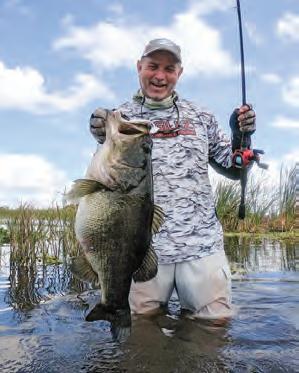


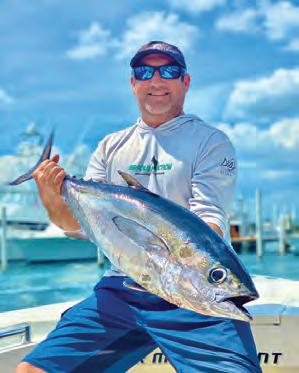

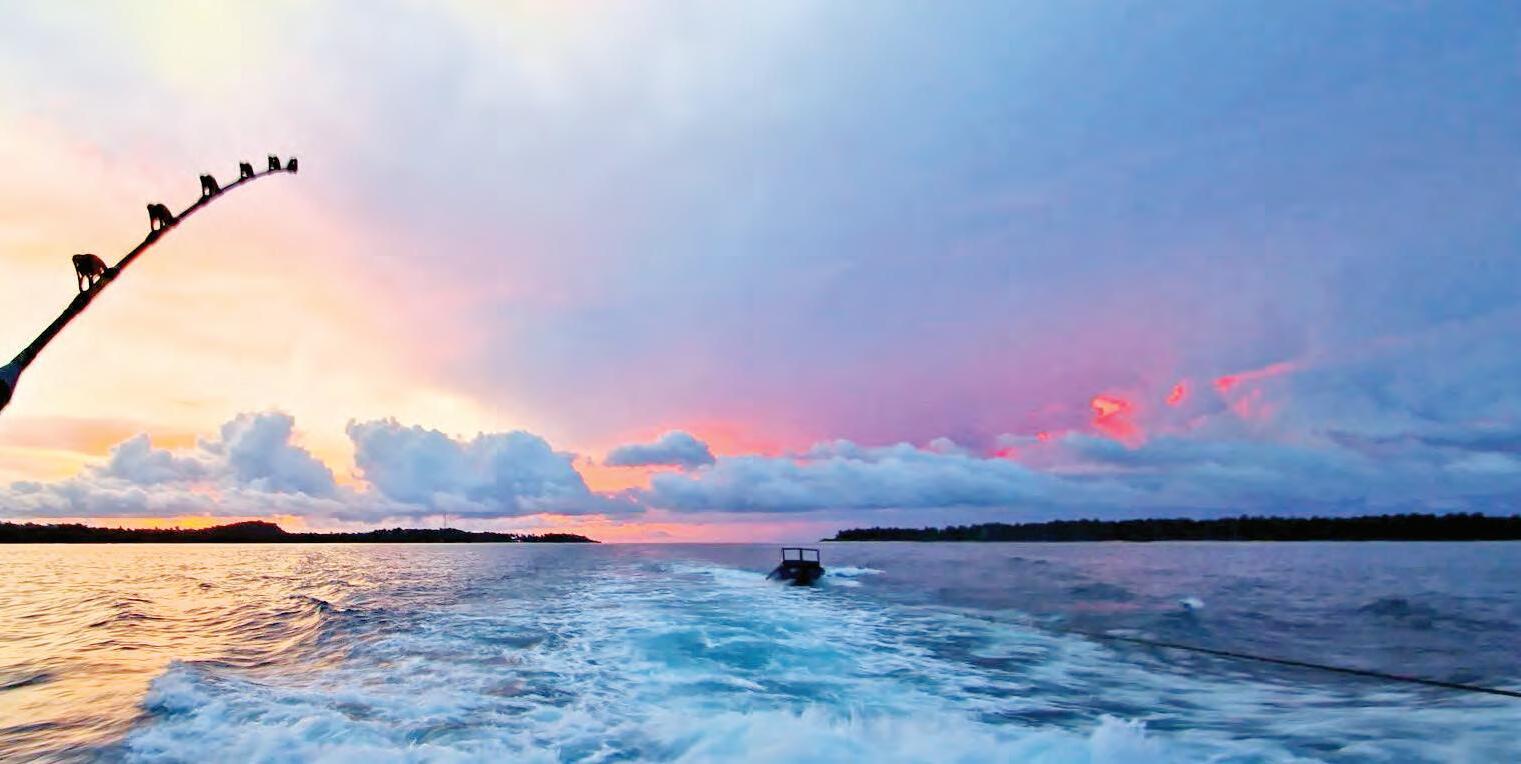




Introducing The All-New NavNet TZtouchXL Series
Transform Your Helm Into A Multi Function Masterpiece
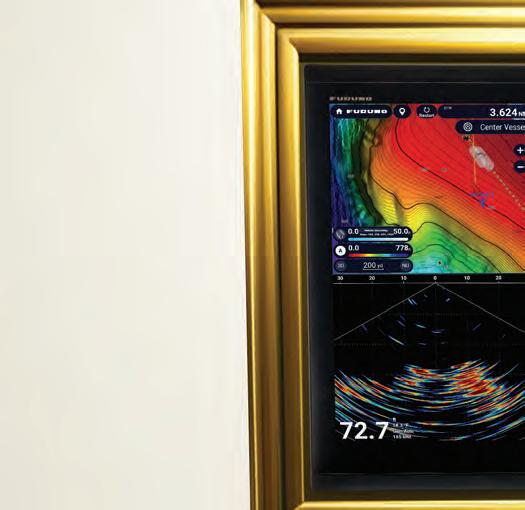



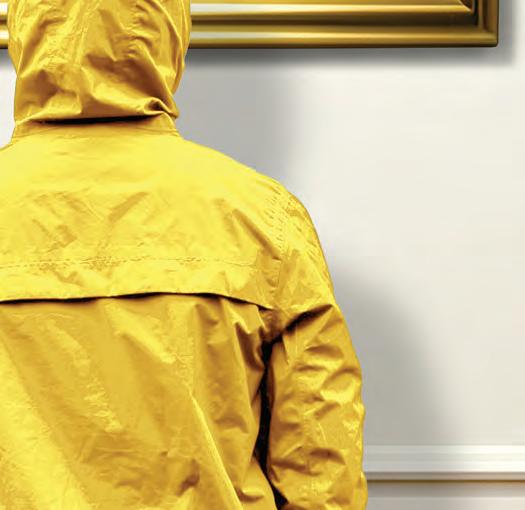
NavNet.com




Over the last few years, a burgeoning fshery has established the Gulf Stream out of Charleston as a big-time billfsh destination. Te ofshore trolling bite has been very good.
Capt. Mike Able keeps close tabs on the fshery. He and his brother, Graham, run Haddrell’s Point Tackle and Supply, a familyowned hunting and fshing store, which has grown to two locations and a fy shop in the Charleston area since their father, Mike Sr., started the business in 1983.


“Charleston has defnitely been put on the map with the billfshing we’ve had the last several years. It’s really been phenomenal,” Able said. “I mean, look at the Carolina Billfsh Classic. In the CBC last year there were outriggers full of sailfsh fags… we’re talking double-digit stuf. And not just the big boats. I mean, the big boats have an advantage, but guys are catching blue marlin from center consoles, too. You know the fsh are really chewing when the center-console guys are hitting fsh like that.”
Te Carolina Billfsh Classic (CBC) is one leg of the South Carolina Governor’s Cup Billfshing Series. It is held out of Mt. Pleasant each June. Last year, with poor weather
conditions during the one-day shootout, 47 boats released nine blue marlin and 53 sailfsh. Te top boat released four blue marlin. Te second-place boat released seven sailfsh and a blue marlin.
Able said conservation eforts, particularly from the Governor’s Cup, have led to healthier stocks. He also thinks anglers are getting better at fnding and catching billfsh. Te run outside the ledge is still 50 to 55 miles, but these days captains can go straight to potentially productive water. Satellite services make it easy to identify blue water, weed lines, temperature breaks and color changes to make a solid gameplan before leaving the docks. Additionally, technology like Omni Sonar can pinpoint fsh with an efective range of 5,000 feet.
“You could mark a fsh from a half mile away and go over and drop baits,” he said. “It doesn’t mean you can make them bite, but you know they’re in the area.”
Peak season for blue marlin and sailfsh is May and June, but blues will be in the area all summer. Sailfsh can be good into October or November, when wahoo enter the mix heavily. Able said a lot of marlin they catch are 150- to 200-pound “rats,” but they see some 300- to 400-pounders and an occasional 500-pluspound blue marlin. White marlin might also show up in a spread.
One of the perks of trolling out of Charleston in spring is you’ll also likely fll the box with dolphin and blackfin tuna. Capt. Able hung up his charter captain hat a few years back.
By Nick Carter
Now he fun-fshes with pretty remarkable success for billfsh and meat fsh by pulling a mixed spread with dredges, squid chains and circle-hooked ballyhoo from a ’34 Regulator.
Check out Haddrell’s Point Tackle & Supply at HadrellsPoint.com.
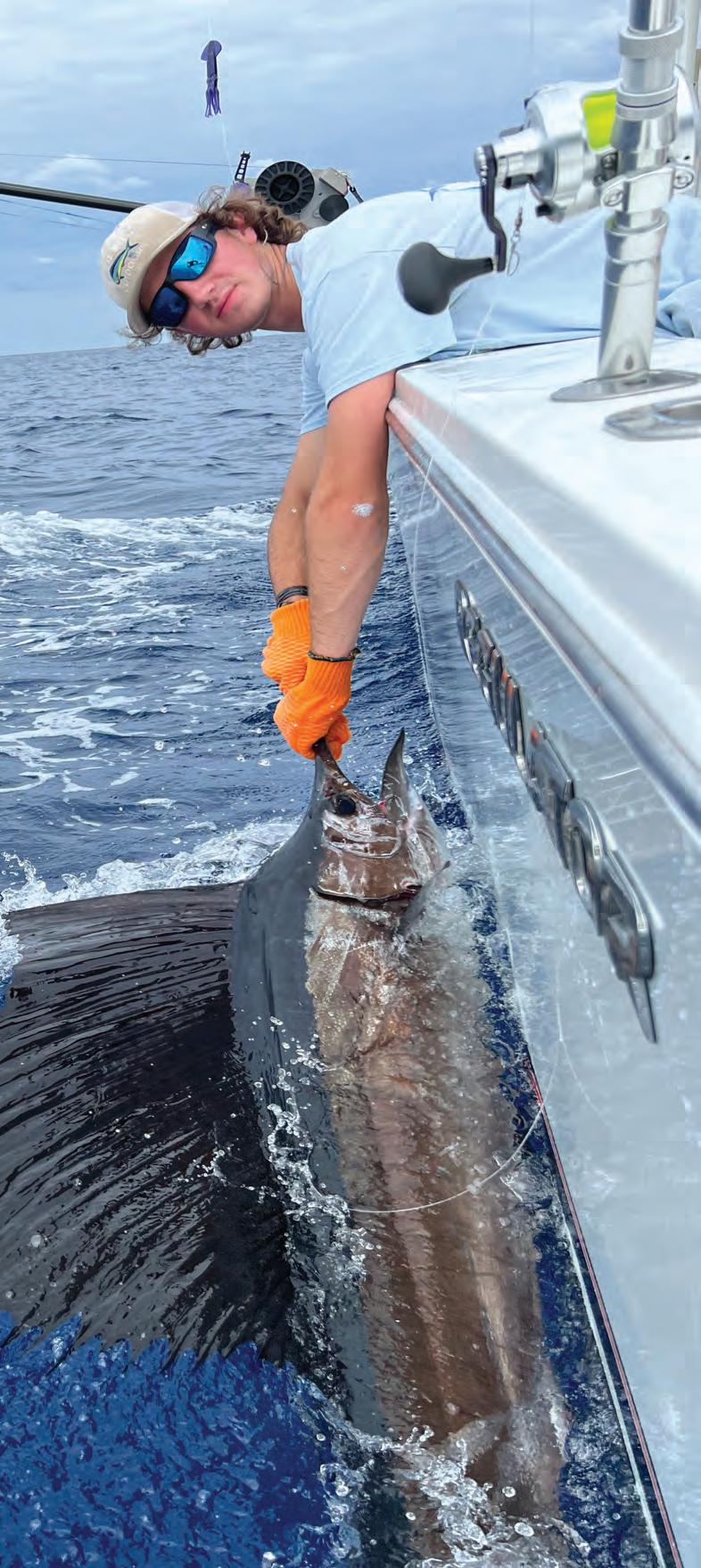

Instead of going “bottom fshing” this season, I would focus on going “grouper fshing”… at least for gags while the season lasts. You can go ‘bottom fshing” for the next seven months, but let’s put some gags in the boat while the law allows it! Here are some tips to help you bag some gags.
• Having the right bait is a major part of this puzzle. A pinfsh trap in a productive area for just a few hours and an (otter-proof) foating bait pen at the marina are priceless.
• You must anchor up or use the trolling motor in “spot lock” to properly fsh any piece of good bottom.
• When I frst post up on a good-looking mark on the recorder, I have everyone else on the boat fre down whole frozen squid on a jig. At the same time, I use a sabiki to catch whatever baitfsh are available on the structure. Here’s how it works:
1) Te squid might catch a handful “bottom fsh,” and maybe a grouper or two.
2) Most importantly, it sets a nice chum slick on the bottom that attracts the real predators of the structure directly under
your boat, and they will be ready to eat.
3) Afer four or fve volleys of squid, everyone baits up with a beautiful baseball-in-diameter-sized live bait and sends them back down to the bottom together. Tese baits are too big for most bottom fsh to get their mouths around.
4) Now, the grouper appear on the scene, curious about all the noise and the good smell. What do they see? Tey see a pinfsh from the marina or whatever came up on the sabiki. I like to fsh these baits on one of my Crab Decoy Jigs, which makes it look like the bait is struggling in the grasp of a hungry crab or squid. A big grouper, and especially a gag grouper, sees this as a Happy Meal. Tey love crabs, squid and baitfsh, and with this rig they think they’re getting it all in one bite.
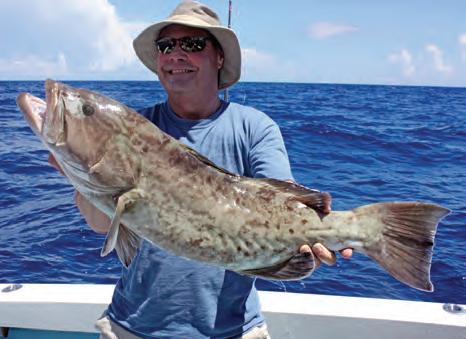
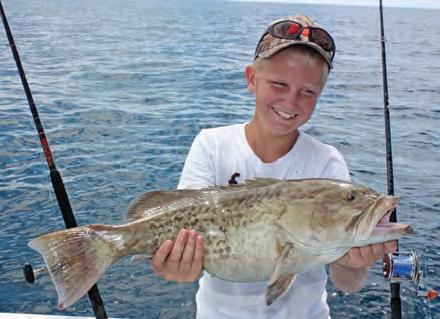
5) An added bonus is that this is clean tackle, free of excess hardware, that sends the correct signal to grouper and results in bites.
• Te downside to this style of fshing is it will attract sharks. It’s all fun and games until the man in the gray suit shows up. Ten it becomes hard work. Sharks of all kinds are drawn to struggling snapper.
For more info on the jig, tackle and/or bait, check out Tim Barefoot’s YouTube channel and website at barefootcatsandtackle.com.
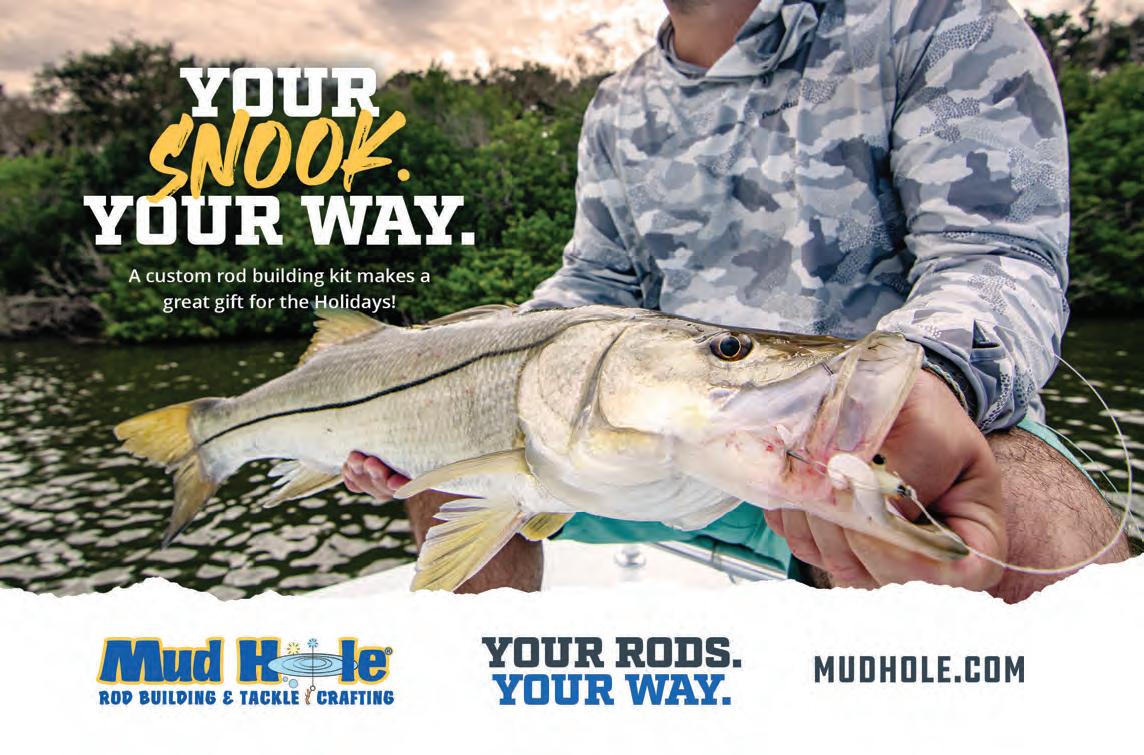












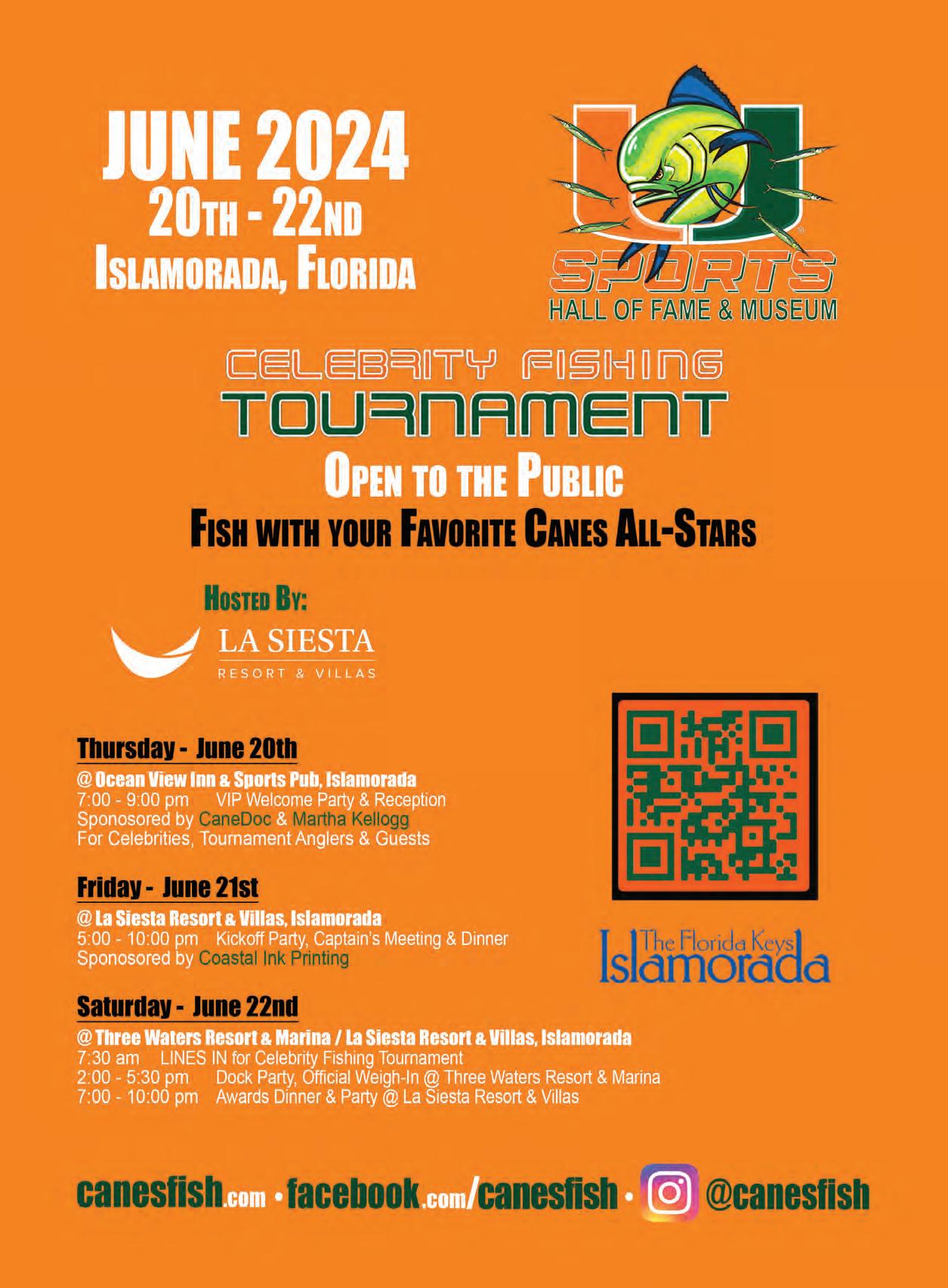







 By Capt. Quinlyn Haddon
By Capt. Quinlyn Haddon
May 1 marks the reopening of Atlantic grouper season here in the Florida Keys. Over the past four months of season closure, a multitude of released catches taunted local fshermen, and now the hunt is ofcially back on!
While the Keys might not be well known for grouper, there is no reason why they shouldn’t be. Between the reef, wrecks and ofshore deep-dropping, the Keys are home to a plethora of grouper species. Te reopening of red, black, gag and snowy grouper vastly
increases fshing opportunities here in our Atlantic waters.
When fshing for grouper on the reef, keeping your rig from getting rockedup on the bottom is the biggest challenge. Do not overweight your rig, and keep an angler on or near the rod at all times. Grouper are notorious for grabbing a bait and taking it back into their homes immediately. When you lose a big grouper, especially with a mouthful of your tackle, they grunt a warning to the other fsh. Tis shuts down the grouper bite. It is best to keep the grouper rod in your hand when possible and be ready to crank them away from their hidey-holes. Tere isn’t much room or time for error on the initial bite.
Fishing for grouper over wrecks can also be highly productive. Amberjacks, which received a short closure in April, can be caught as bycatch while wreck fshing for grouper. Teir season also reopens in May.
Deep-dropping ofshore also expands greatly this month, as snowy grouper and blueline tilefsh reopen. Yellowedge grouper remains year-round, but even with large grouper hooks, tilefsh can be a frequent bycatch. Deep-drop rigs can be modifed this time of year to include smaller hooks that welcome the tilefsh bite and increase productivity of each drop.
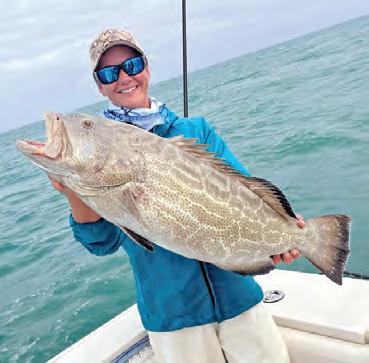
Te abundance of mahi-mahi this month sweetens the deal for heading shore to deep-drop. Not only can you fsh for mahi-mahi on the route to, from and on your deep-drop numbers, you can also chase birds for a chance to read the bottom for new deep-drop spots. Tere is nothing quite like fnding a new fshing spot, and with so much in season right now, it is the perfect time of year to scout.
Remember to check fshing regulations, as there are ofen surprise closures on many species. Venting and descending tools are required when fshing for grouper and are especially important at the depths where snowy grouper are found. One look at the bug-eyed balloon face of barotrauma will tell you these fsh cannot return home safely without help. It is easy to go over a limit of snowy grouper by accident, so have your gear ready and know how to use it.
Sweet E’nuf Charters specializes in grouper and is already booking up quickly for the much anticipated reopening. Give us a call to get tight!
Capt. Quinlyn Haddon guides with Sweet E’nuf Charters out of Marathon, Florida Keys. Contact her at (504) 920-6342 or Captainquinlyn.com.
Find her on social @captainquinlyn.



Julia Bernstein, 12, of Miami, had a record-setting day fshing of Key West on Jan. 5. She set two new state records in a day by catching a 20-pound, 15-ounce cobia and a 1-pound, 8-ounce mangrove snapper while fshing with Capt. Dale Bittner.
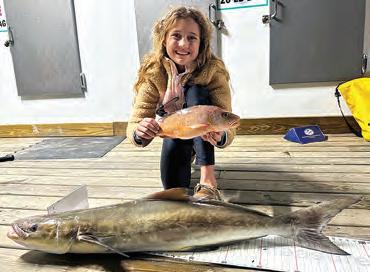
Bernstein’s records were the frst two fsh certifed in Florida’s new saltwater record categories, which were launched in January. Tey both set the bar in the new Youth All-Tackle Weight category. Florida is also now recognizing state records for Youth and Adult Length Categories.
“‘Are those all cobia?’ I couldn’t believe it, as we pulled up to the wreck, there was a dark cloud on the surface of the ocean. Sure enough, it was a large school of hungry cobia, and they were ready to eat!” Bernstein said. She quickly hooked up to two smaller fsh, but in her words, “Tird time was the charm; it was an even larger cobia! We had a great afernoon, we caught six fsh from that school, one of which became the Florida state record and one of which is a pending IGFA Junior Record.”
Bernstein already holds 11 IGFA world records.
To fnish the day, they made one last stop, where Bernstein hooked up with her record mango.
“I worked hard to get it of the bottom and then reeled as fast as I could. Good thing I did, turned out to be a state record mangrove snapper!” she said.
Joseph Ingold set the bar for the redfsh length state record with an impressive 36.25-inch red he caught from a Kayak in Panama City in February. His story is of a slow day that turned exciting in a hurry.
“About halfway down, I hadn’t gotten a single hit, so I cast my paddletail and let it sink to the bottom while I grabbed a new lure to tie on. Once I got my new lure ready, I started to reel in my paddletail to switch it out,” he said. “About fve seconds afer I started to reel it back in, the redfsh hit.”
Ingold thought he had snagged the bottom, but then the fsh began to run.
“I got super excited and loosened up my drag at that point. I really didn’t want to break her of since I was only using 10-pound test,” he said. “When I landed the fsh, I honestly didn’t even think about submitting it for the new length record. I actively participate in the Catch a Florida Memory programs, so I just took pictures for myself and for the Reel Big Fish program. Afer I submitted for a Reel Big Fish, I was curious if anyone had submitted for the new length record and, to my surprise, it was still vacant. So, I took all the pictures I had and put in my application.” CALL
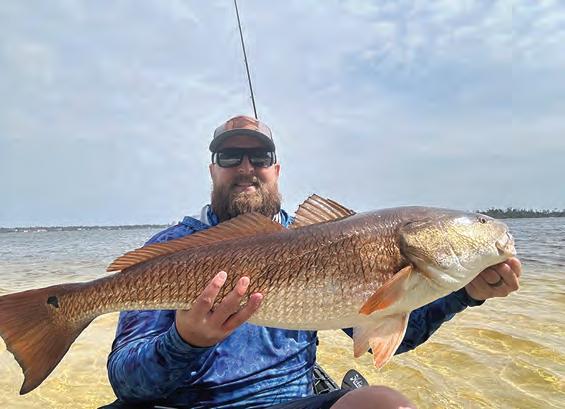
 By Mark Ambert
By Mark Ambert
You know spring has ofcially arrived when the eastern seaboard welcomes the arrival of voracious blackfn tuna! What better way to shake of the winter doldrums than to get out and target these small but mighty speedsters.
May and June are great months to target these fsh. Tey enjoy a wide range from Cape Cod to South Florida, and during the summer they migrate to temperate waters that remain above 70 degrees. Tey inhabit the warmest waters of all tuna species.
Blackfns are a schooling fsh and feed on migratory baitfsh, squid and shrimp. Tey frequently hunt the deeper side of the ledges and reefs common to the eastern seaboard. Tey commonly range from 5 to 20 pounds, with the occasional 30-pounder blowing up your bait!
Live bait is best for bigger tuna. I prefer goggle eyes, which can be caught or bought. Due to their hardiness, they are worth the cost to have on hand.
For live baiting, I use a Shimano Baitrunner OC size 6000 reel spooled with FINS 40G Braid. With the diameter of 6-pound mono, this braid has a tensile breaking strength of 45 pounds. I pair this reel with the Shimano Terez model TZS69M, 6-foot, 9-inch medium action spinning rod. I use a 6-foot section of Seaguar fuorocarbon in the 30-pound range for leader and Owner SSW 6/0 or 7/0 cutting point hooks. Blackfn are leader shy, so start with a 30-pound leader and move up to 40 only if you are experiencing breakofs.
I combine live bait with jigging techniques when targeting tuna. For high-speed retrieval of lures through the water column, which these fsh prefer, I use the Penn Battle III 4000 HS (high-speed) spinning reel. I pair this with a 6-foot, 6-inch Shimano Trevala B. I start of using Rapala Williamson Kensaki jigs in the 120- to 220-gram range.
Pro tip: Switch sizes and colors until you fnd what best “matches the hatch” rather than switching jigs.
I fsh early mornings, as tuna can be both light and boat shy. During a full moon cycle, the bite can turn of quickly as the fsh have been feeding most of the night. Once on my target area, I set up for a drif just outside the frst reef system, past the drop-of in deeper water to avoid bonito, sharks and kingfsh. Tis is typically in the 225- to 300-foot range. I deploy two live baits—one in the bow and the other in the stern—then jig in the middle. Check your fshfnder ofen to identify “scratches,” or fsh moving through, and mark the depth they appear in the water column. Target these fsh while jigging.
Te food quality of blackfn depends on proper bleeding when they are frst caught. Make a small incision behind the pectoral fn on both sides of the fsh to ensure the highest quality meat. Catching these speedsters will quickly become an addiction, and now is the time to make it happen!
Find Mark Ambert on Instagram @marksgonefshing_™; email: marksgonefshing25@gmail.com.
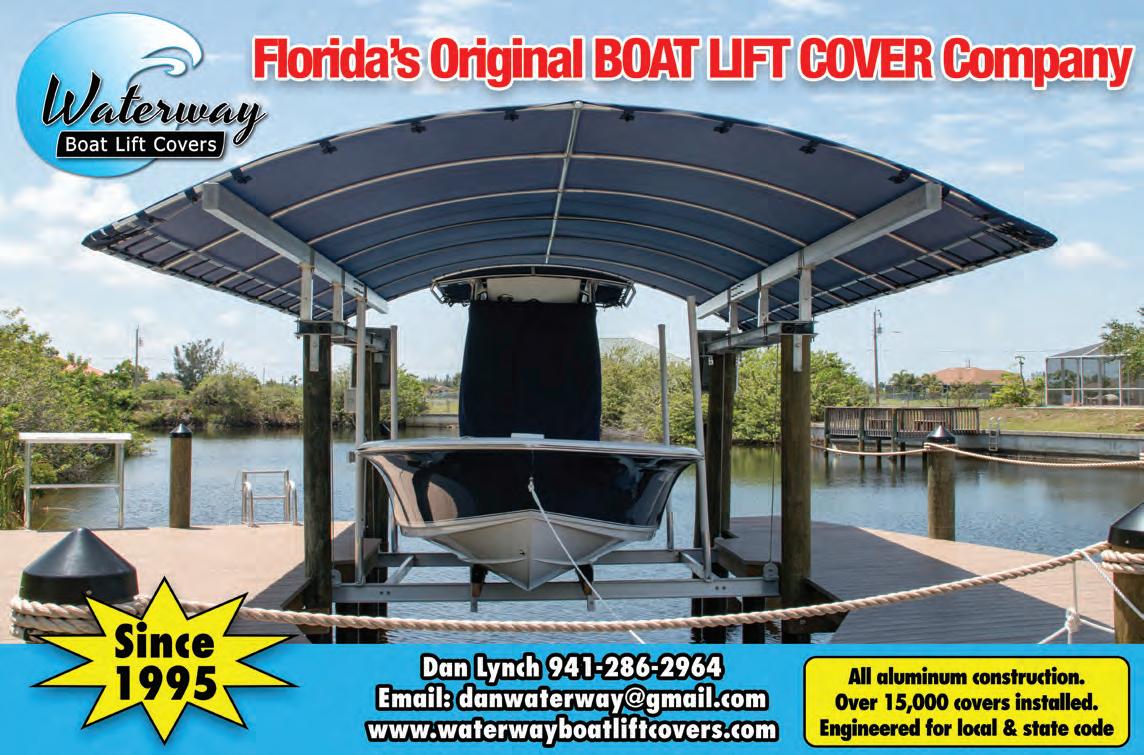










Whether considering repowering your trailer boat or your offshore beast, there is a Mastry Suzuki RePower Center that can serve your repower dreams. Mastry Suzuki RePower centers are the best in the business and have the experience, technical know-how and boating passion to make your repower project a remarkable success. With total boat systems capabilities your local Mastry Suzuki RePower Center can address all your upgrade aspirations. Essentially transforming your boat into a totally new boat at one single location.
With 15 Locations Across the Southeast There is a Mastry Suzuki RePower Center Near You.












*Get with the Program!



When you purchase a new Suzuki outboard from an authorized Mastry RePower Center you qualify to become a member of the Mastry Suzuki Owner’s Edge. Owners receive an identification card that provides them with important information about their Suzuki outboard motor as well as a passport to additional benefits during ownership. Members enjoy a detailed engine maintenance schedule, Mastry Suzuki RePower Trade Program and special pricing from Mastry Suzuki Partners.




Durable boat lifts expertly designed with Florida in mind.

ShoreStation hydraulic boat lifts are a reliable choice for coastal residents and boating enthusiasts alike. Their strong construction, made with corrosion-resistant materials, allows them to withstand harsh environmental conditions, including sun, storms, and saltwater damage. ShoreStation provides a steadfast solution for protecting waterfront investments, ofering peace of mind to owners in the Sunshine State.

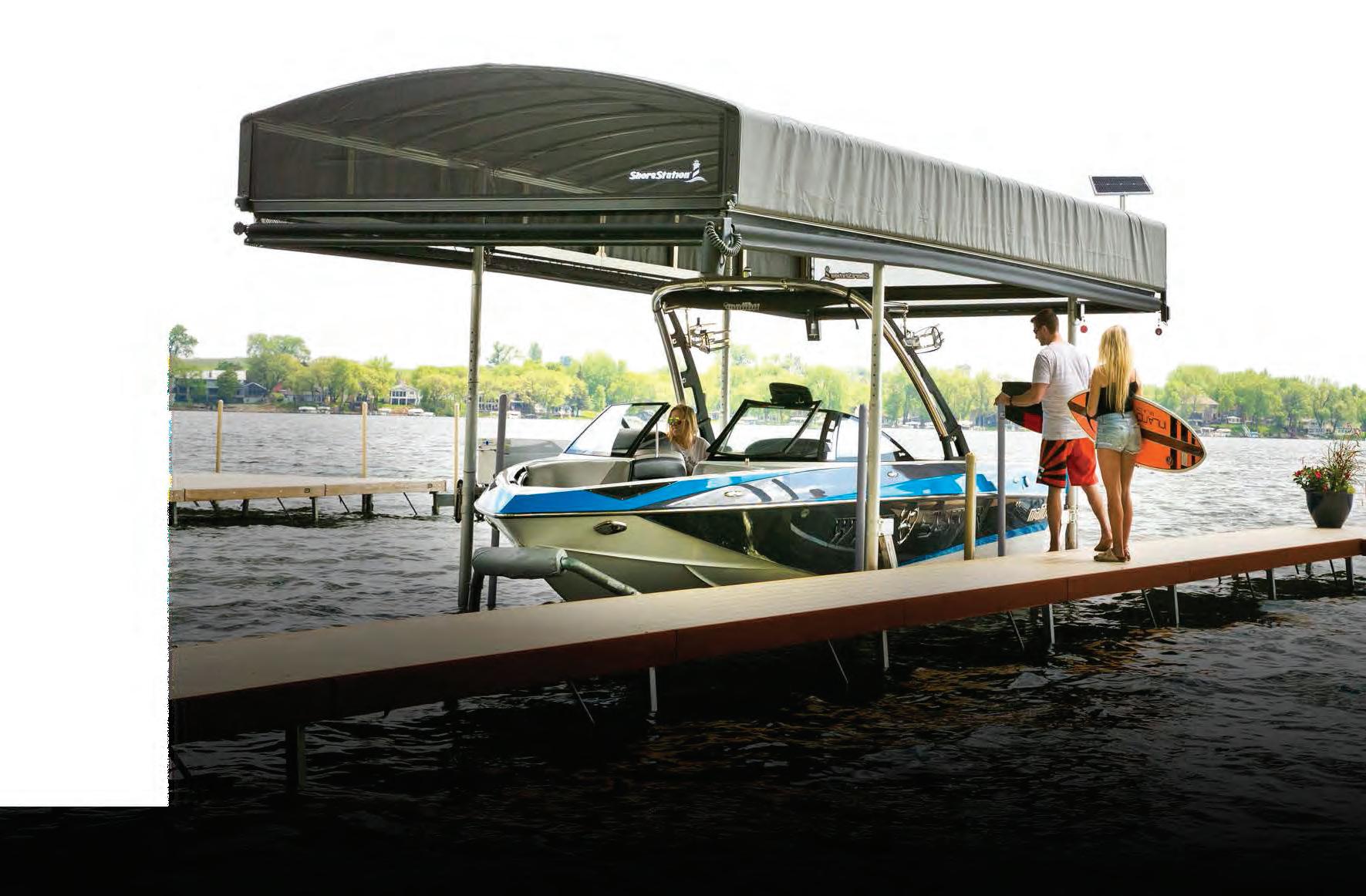

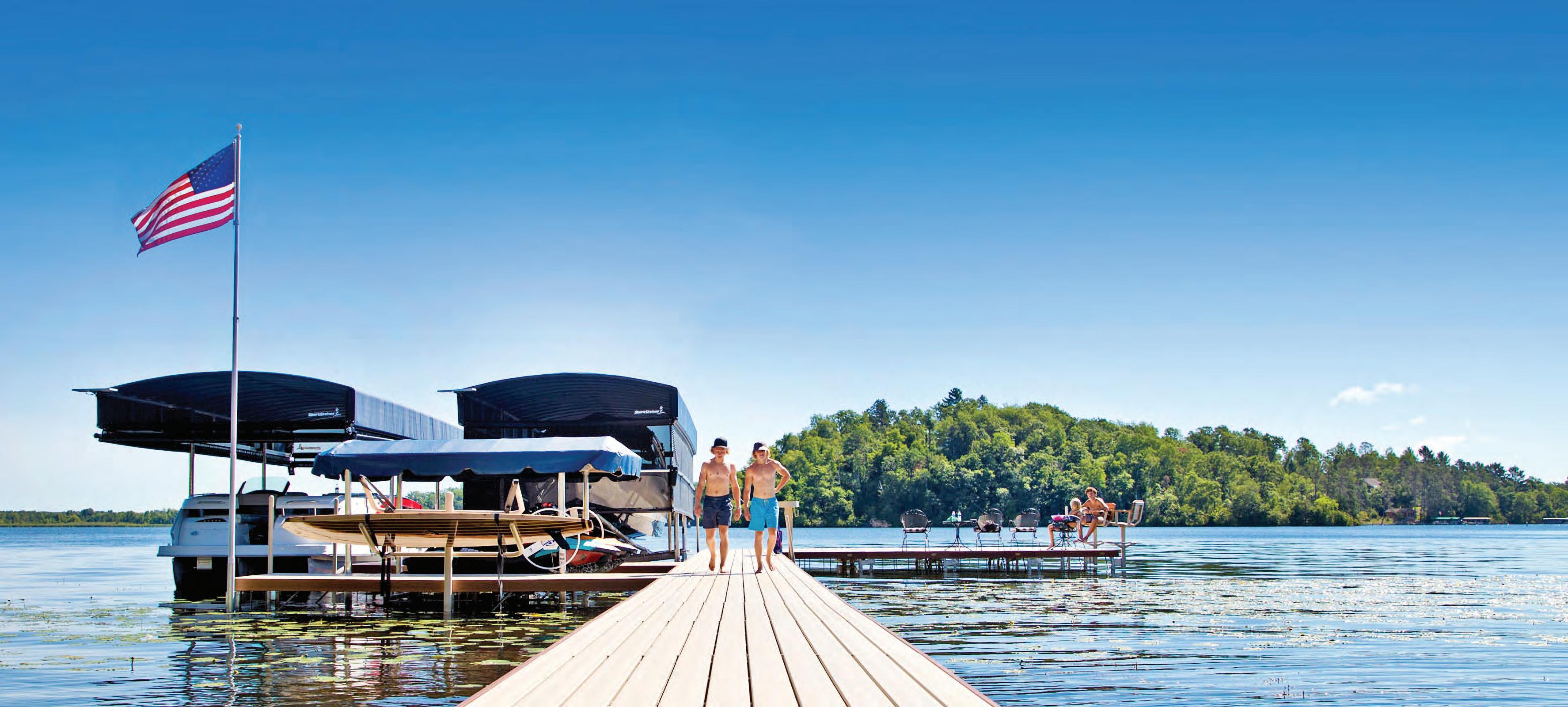


Equipped with exceptional weather resistant fabric and breathable SunTex 80 woven mesh ends for maximum protection and durability,

Made from the highest quality materials, our innovative hydraulic boat lift is one of the fastest and safest lifts on the market today. When you have a hydraulic lift, there’s no need to worry about wind and waves getting in your way. This lift will give you confdence to safely land and secure your boat in less-than-ideal conditions. No Piling Required

Never miss another moment on the water. Power your lift with clean, free solar power. Our speedy 20 watt charger features solar regulator drainage protection, saving your battery from permanent damage caused by overcharging.



Since early November, when the frst reports came in from the Florida Keys, scientists have been looking into reports of fsh exhibiting abnormal behavior referred to as “the spins.” Bonefsh & Tarpon Trust (BT&T) recently pointed its fnger at harmful algae as a likely reason for this phenomenon that has killed numerous endangered sawfsh and afected fsh of 30 diferent species.
Fish with the spins lose equilibrium and swim upside down in circles, ofen following a stressful or stimulating event. According to BT&T, a majority of reports for this behavior originated in the Lower Keys, between Big Pine Key and Sugarloaf Key, but there have been reports farther west toward Key West as well as in Miami north of Biscayne Bay National Park. Among the species afected are popular sport and food fsh such as tarpon, permit, snook, jack crevalle, mutton snapper, mangrove snapper, cubera snapper, goliath grouper and redfsh.
In January, BT&T and the Lower Keys Guides Association launched a study with the assistance of numerous other organizations to determine the cause of these events. BT&T stopped short of calling its results conclusive, because there’s still testing to be done, but they indicated occurrences of harmful algae blooms in the gambierdiscus family are the likely culprit.
Saltwater anglers will likely be familiar with ciguatera poisoning caused by the accumulation of ciguatoxin in predatory food fsh. Gambierdiscus is known to produce ciguatoxin and other neurotoxins that can have diferent efects on human and marine life. BT&T in not yet sure whether this variant of gambierdiscus is producing any cytotoxin that would move up the food web, but evidence indicates it is such a toxin that is afecting fsh.
Tese harmful algae are more common in reef areas that are environmentally stressed, according to BT&T. Testing continues and should hopefully provide more insight into this algae’s potential impact to the fsheries.
For more information, go to bonefshtarpontrust.org.

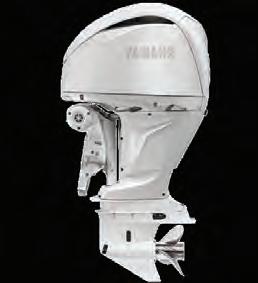




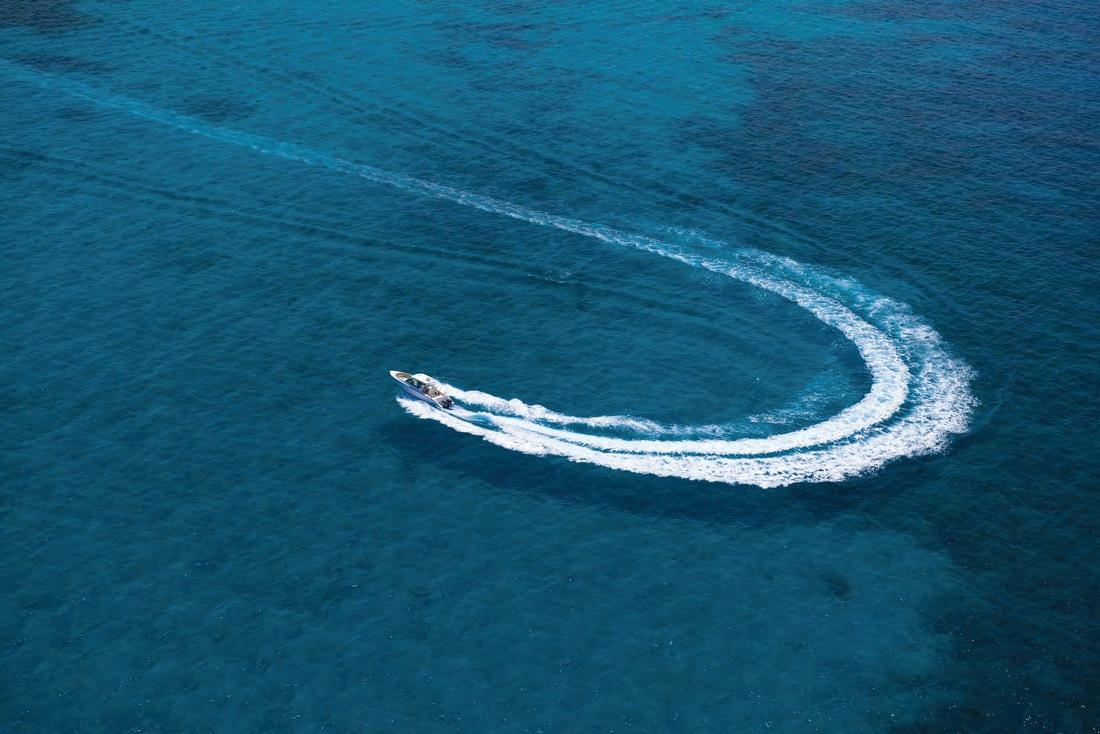



The Sebastian Exchange Club is gearing up for the 30th Blue Water Open Charity Offshore Fishing Tournament and the excitement is building! The tournament is scheduled for June 1st with headquarters at Capt. Hiram’s on Indian River Drive in Sebastian.
One hundred percent (100%) of the funds raised by this event are poured back into the community. The Exchange Club of Sebastian has raised over $1,000,000.00 (that’s right, One Million Dollars) through this tournament todate. All the proceeds go to non-profit organizations whose goals are to prevent child abuse, support our youth, honor veterans and make a positive difference in our community. Some of the organizations who have benefitted from this event are Youth Guidance, Boys and Girls Club, Nana’s House, Guardians for New Futures, Veterans Counsel, Roseland Ecumenical Food Pantry, and many others.
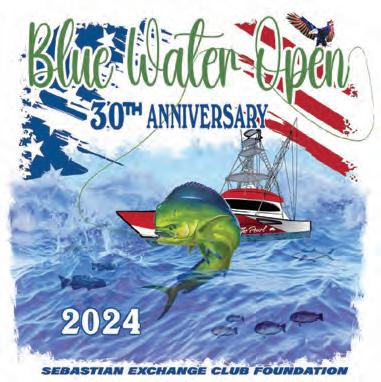
The festivities begin on Friday, May 31st at 5 p.m. at Capt. Hiram’s with registration, the captain’s meeting, raffles, 50/50, live auction and much more. There is even a special raffle to win an awesome vacation worth $5,000!
The fish categories have changed a bit this year, mainly due to new recreational fishing regulations, so check out the details. Total prize money of $21,000 is up for grabs for


those fishing the tournament, with 31 opportunities of winning some of the purse, including a bonus 30th anniversary drawing for $1,500 for registered boat captains only. The main board and bonus board fish categories are: dolphin, kingfish, amberjack, and grouper. Additionally, there are $1,000 awards for the biggest cobia and wahoo. Top boat gets you $2,000. There’s also the Capt. William Charles Memorial Catchin’ and Cookin’ Award for $1,000 to the largest board grouper. And prizes for top lady angler and top
junior angler.
All boats must be registered in person on Friday night, May 31st between 5 p.m. and 7 p.m. The captain’s meeting begins at approximately 6 p.m. Boats can leave out of any inlet, but no lines in the water before 6 a.m. Saturday morning. Weigh-in is between 2 p.m. and 5 p.m. at Capt. Hiram’s dock. Boats must check-in with the committee boat promptly by 5 p.m. to weigh fish. No late check-ins allowed.
The Sebastian Exchange Club is actively looking for sponsors for the event. Besides lots of exposure
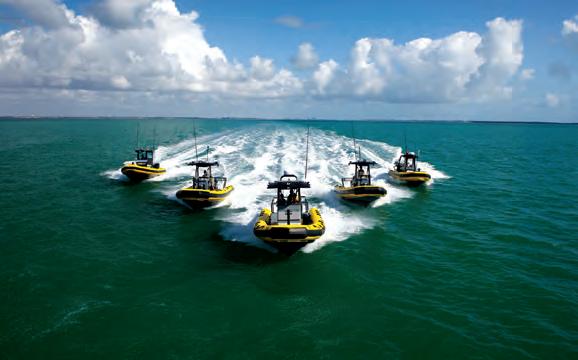
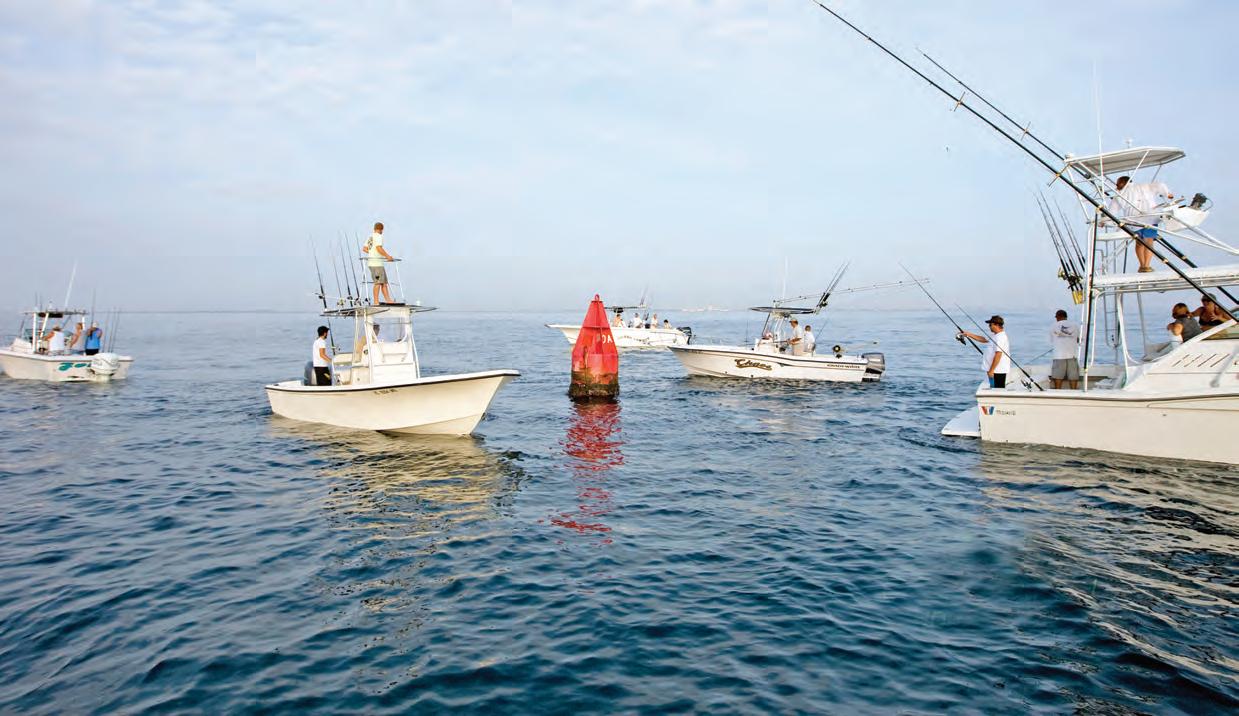
The St. Lucie County Artificial Reef Program is once again turning to the community for help monitoring its artificial reefs. Monitoring is important to the program because it is (1) required by the U.S. Army Corps of Engineers to comply with permit conditions, and (2) is necessary to plan new reefs. Compliance monitoring is required annually for two years on each reef to assess reefs’ ability to provide recreational opportunities (fishing and diving), as well as other ecological functions like juvenile fish habitat, potential spawning, and potential larval settlement.
Volunteer monitoring started in 2010 with the production of a spearfishing video (https://video. com/13011548) on the 120’ reef, the 140’ reef and the SW Amazone Reef by Eric Peters. This video showed large numbers of gag on the County’s mesophotic (deepwater) artificial reefs during the winter spawning months. Matthew Sewell reported that gag are still present on the County’s artificial reefs during the winter (12/31/23).
Video taken by researchers at Florida Atlantic University targeted goliath grouper on the CCA – Curtis Bostick Reef, showing congregations of spawning sized fish on this reef in January 2024. This video can be found on the County’s artificial reef website https://www.stlucieco.gov/ departments-and-services/publicworks/artificial-reef-program.
Derek Ferguson and Dani Claessons aboard the Bella Via conducted a post-deployment dive on the A.A. Hendry Reef (ex. 127foot aluminum motor yacht M/Y Time). Video of this dive, also on the County’s website, shows clearly that coral recruitment modules on the
Marina, with project and contractual assistance being run through the Marine Cleanup Initiative. St. Lucie County also partnered with the MCAC Artificial Reef Fund to deploy two other vessels. The Captain Patrick Price Reef (ex. Last One) and the Daymaker Charters

reef survived the deployment so that other, similar modules may be tried in the future. Deployment of this yacht occurred on July 20, 2023, at162-foot depths and was assisted by funding from Gary Hendry, David Powell of the MCAC Artificial Reef Fund, and in-kind services from Willis Custom Yachts and the Causeway Cove
Reef (ex. Spirit of Palm Beach) were deployed on May 15 and 16, 2022, respectively. MCAC is partnering with technical divers from Scuba Diving International-Technical Diving International to gain valuable information on the A.A. Hendry, Captain Patrick Price, and Daymaker Charters reefs.
Planning for monitoring of additional reefs has been started thanks to generous donations from Robert Herbst, Jr. to (1) Ecological Associates for a powerful remotely operated vehicle (ROV) for monitoring deepwater reefs and (2) MMPS Environmental to buy fuel for volunteer divers to navigate to artificial reefs. Stuart Scuba is also donating a card for nitrox cylinder fills for some of the dives.
Volunteer divers and fishers are also needed to help with permitting and deployment of an artificial reef in the vicinity of the old 10A Buoy. This reef will be deployed in 30-to40-foot depths near the Capron Shoal to act as habitat for schooling baitfish. Reefs on the Lee E. Harris artificial reef site have provided habitat for schooling blue runner. Subject to permitting, a mooring buoy may be placed on the reef to prevent boats from impacting the reef with their anchors. The mooring buoy, if permittable, may also serve as a place for recreational anglers to catch live bait. Assistance from anglers would be vital in providing information on fish harvested in the area.
For more information on the St. Lucie County Artificial Reef Program, or to get involved with artificial reef monitoring, or planning the Capron Shoal Reef, contact Jim Oppenborn, St. Lucie County Coastal Resources Coordinator, at oppenbornj@ stlucieco.org or (772) 462-1713.
for your business during the tournament, you will receive boat entries, invitations to the VIP party and t-shirts (the number varies with sponsor level) along with other sponsor benefits. Should you be interested in becoming a sponsor, please contact Chairperson Michelle Morris at jmichellemorris@ bellsouth.net or (772) 473-1466 or visit www.bluewateropen.com.
Whether you fish or just enjoy a good time, plan on attending The Sebastian Exchange Club Foundation’s Blue Water Open Charity Offshore Fishing Tournament on May 31 and June 1 at Capt. Hiram’s.
The Sebastian Exchange Club has been an active part of our community since 1982. Should you be interested in working to prevent child abuse, foster youth, encourage Americanism or just promote good citizenship in the community, consider attending a noontime luncheon at Capt. Hiram’s any Wednesday, except the first Wednesday of each month.
Tournament rules, minimum fish weights, payouts, registration and more details can be found at www.bluewateropen.com.

9am – 2pm
2 DIFFERENT DAYS AVAILABLE:
Tuesday, June 4, 2024
• Tuesday, June 18, 2024
Location: Flagler Park under the Roosevelt Bridge
201 SW Flagler Ave., Stuart, FL 34994
Fishing & Rigging Lessons
• Learn about Fish and Their Habitats Cast Net Lessons
• CATCH LOTS OF FISH!!
Children 7-14 years old
• $20 each child per day
Bring your own fishing pole or we’ll provide one at NO EXTRA COST.
Please bring hat, sunglasses, lunch and drinks.
Obtain your FREE Fishing License at https://license.gooutdoorsflorida.com.
Make sure to choose “Saltwater Shoreline – Only Fishing License”. Register at: stuartangler.com/fishing-events/summer-fishing-camps/
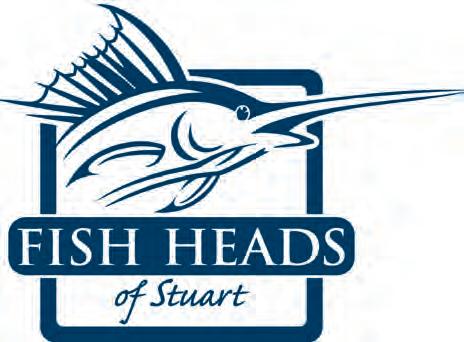


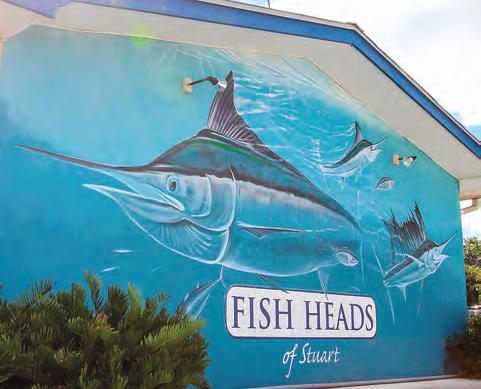
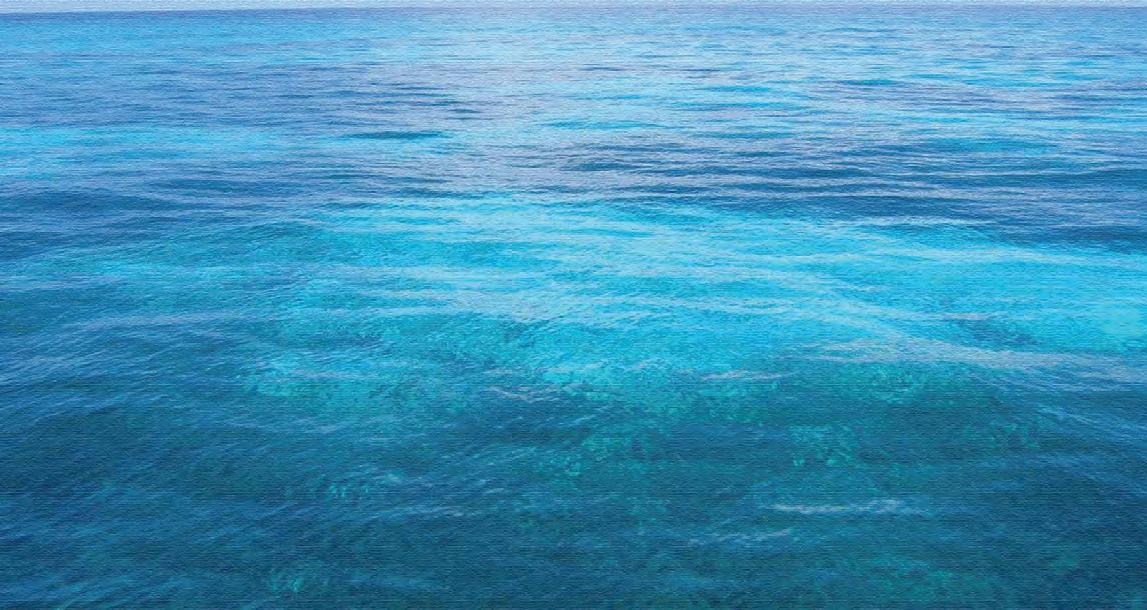
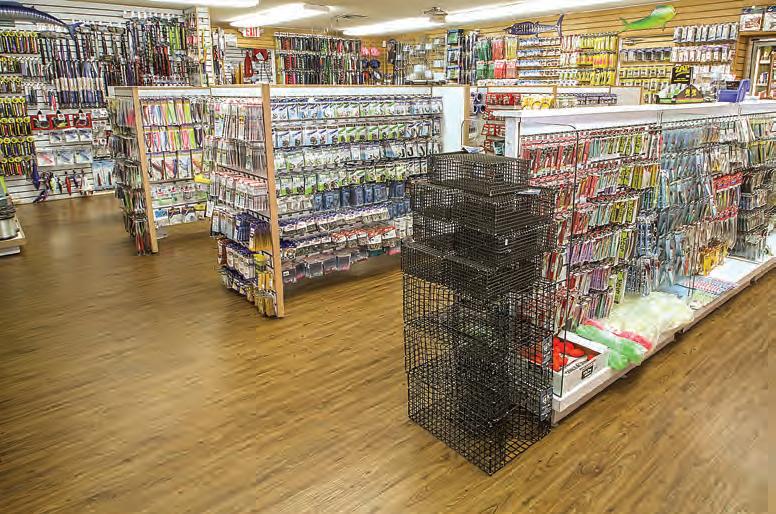

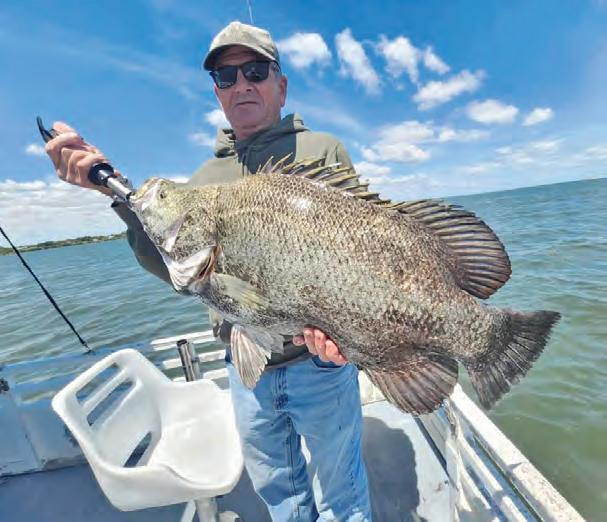
It was a March night in 1998 in the Sunrise City. Tom Lewis went to one of his favorite snook fishing spots and cast one of his hand-tied chartreuse jigs into the lagoon near where he stood.
Some bonafide lunkers lived in this spot along with several VW sized goliath grouper. Lewis knew if anything grabbed his 2-ounce jig, he would be in for a fight.
Suddenly, line started pulling from his reel. Then whatever it was sounded in the manmade Turning Basin used by cargo ships in the Port of Fort Pierce. Lewis had to start dragging it up from the depths. In the darkness he felt he had a snook but wasn’t sure. Something about the fight wasn’t right.
Tripletail have a tough skin, but the meat of the fillet is a lot like snook and cooks up the same way. They can be caught - albeit much smaller - around crab trap floats, bridge fenders, channel markers and other structure. Jigs work, but they cannot resist a live shrimp.

After a long tug of war with what Lewis was sure was a giant snook, he finally got a look at the fish. It was the biggest tripletail he had ever laid eyes on - in fact, Lewis didn’t know they even grew this big.
He weighed it nearby at DeBrooks Fishing Corner - 40.8 pounds. At one time it was the second largest tripletail caught in the world.
The Indian River Lagoon is a great place to catch them from Sebastian to Stuart, and even up in the St. Lucie River as far as the hospital. When you have one on, you’ll know why it is they named the fish “tripletail.”
Capt. Jonathan Earhart
Chaos Fishing Charters (772) 341 – 2274 www.chaosfishigcharters.com jon@chaosfishigncharters.com
Inshore fishing is in full swing as we would typically expect for the month of May.
Snook fishing early mornings can produce good numbers of larger snook on both artificial and live bait. MirrOlures, D.O.A, Rapala topwaters are all great choices when searching for that first light bite. Live baiting with pilchards, pinfish, mullet, and or croakers will work
Capt. Rocky Carbia
Safari I Deep Sea Fishing
Pirates Cove Resort and Marina
4307 SE Bayview St. Port Salerno Reservations: (772) 334-4411 www.safari1deepseafishing.com
Bottom fishing will take center stage in our ocean amphitheater, during the month of May. Florida sunlight will illuminate an offshore playing field that will be ripe with grouper and snapper, as the catch and keep season for grouper will open on the first day of May, ending a fourmonth closed season on these tasty bottom brawlers. Near coastal anglers will break out their heavy tackle and target the many species of grouper that inhabit the wrecks and reefs, east of Stuart. Gag, red, black, and scamp groupers are some of the most prevalent species of the family that will be found just offshore of the St. Lucie Inlet.
The naturally occurring coral reef line in depths of 110 to 160 feet of water, generally known to locals as the “8 Mile Reef”, will be the go-tozone for dialing in successful grouper fishing. Deploying live baits from an anchored or drifting boat will produce the best results for “Grouper Digging”.
The velocity of the horizontal flow or current and bottom temperatures are the main variables for strategy decision making when positioning
well throughout the day this month. Usually, I suggest using a 40-60 lb. Tsunami fluorocarbon leader with a 6/0 circle hook for snook fishing in the Indian and St. Lucie rivers this time of year. Hook size will largely depend on the size baits you are using for the day. You want a properly sized hook to bait ratio so that the baitfish will look as natural as possible when it’s attached to your line. Expect a few jacks, snapper, redfish, tarpon, and the occasional large sea trout while targeting snook.
Nearshore fishing provides great sight fishing opportunities near the beach for cobia, jacks, kingfish, sharks, permit, and tarpon as of lately. Remember a good pair of polarized Salt Life sunglasses so that you can spot more fish further away. This will give you more time to properly place casts for successful hook up ratios.
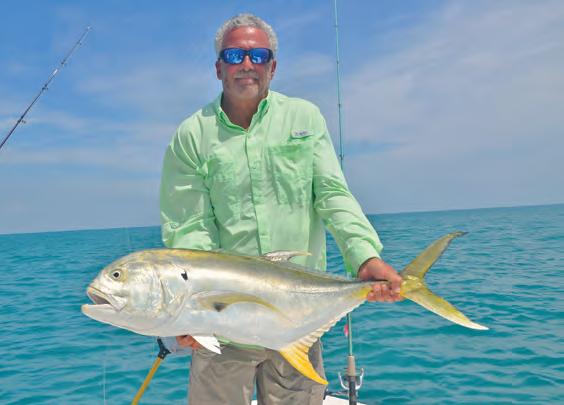
North or south along Hutchinson Island has been holding good numbers of jack crevalles. Top water lures with a fast retrieve will yield some pretty aggressive bites from these full-grown beach jacks. Goliath groupers are also holding on structure locally and can be a blast to catch. Be sure to use an extralarge rod and reel to quickly wrestle one up to the surface for a boatside picture and release.
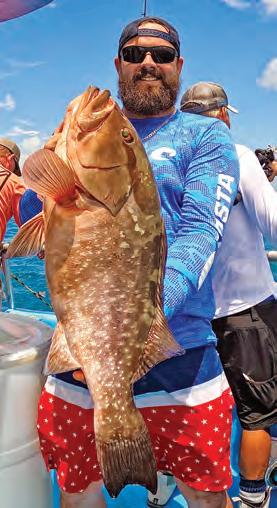
one’s boat over top of a grouper honey hole. Heavy tackle will be a mandatory necessity for steering a big grouper to one`s floating platform—4/0 to 6/0 reels spooled with heavy braid of 100to 200-pound test and terminal tackle to match the main line will yield the most successful end results.
Grouper species can also be found and targeted in shallower depths, especially on reef structures in 70 to 80 feet of water that comprise the natural reef line known as the “6 Mile Reef”. Natural coral ledges east
Kingfish and sharks are also plentiful around large concentrations of baitfish schools near local inlets and down along the beaches this time of year. Bring a few wire leaders and have some fun!
and north of Jensen Beach in these depths, historically are home to large gag and red grouper, and will be hot spots for grouper grocery getters. While bottom fishing at these depths, anglers will also be pleasantly surprised to get attached to jumbo mutton and mangrove snapper, who are reef mates and will live right alongside the grouper family. May will provide a toasty backdrop for exciting bottom fishing for the offshore anglers of Martin County.


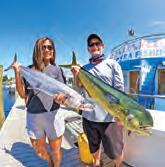




Capt. Bo Samuel
Pullin Drag Charters (772) 971-6661
facebook.com/Pullin-Drag-Charters
catainbofishing@gmail.com
Whenwe are thinking about May fishing, we are anticipating the opening of grouper season on May 1st. Calmer days and warmer temperatures are finally here providing plenty of opportunities for inshore and offshore fishing with lots of “pullin drag” action. The reefs are being very productive and we are seeing more bait fish in the area plus the bigger fish that follow them. What do we think about May? Fair weather has arrived, snapper fishing is on fire, kings and mahi are moving in, and Florida grouper season begins!
Avid anglers along the Treasure Coast are ready to target grouper in the hopes of landing a prize fish and a bag full of delicious fillets. It’s

important to have good quality bait for successful grouper fishing and I recommend live croakers, pilchards, and threadfins, with just enough weight to hold bottom depending on the current.
We know grouper dwell at various levels of the water column so most of the time you can be productive at just about any depth. I usually get
a lot of grouper and snapper bites fishing the shallower reefs so you shouldn’t have to go past 90-120 feet or so. Fishing around and over structure like ledges, outcroppings, wrecks, and artificial reefs should yield some nice hook-ups. Gag, black, red, and scamp are some grouper species we find on reefs and wrecks straight out the Fort Pierce
Inlet. Also, be prepared for possible goliath grouper action as we hook them frequently on bottom fishing trips.
While it’s prime time to target grouper, the snook action has been phenomenal since April and we are still booking snook charters regularly. Beautiful keepers are being caught drifting the inlet with significant under-and-over slots being safely caught and released. Casting around docks and other structures with fast moving current often provides great snook action but be aware, snook are expert at using structure to break the line. Best bait choices are live pilchards, pinfish, croakers, and select shrimp. Slot limit is not less than 28 inches to not more than 32 inches and the season remains open until June.
If you’re looking for some action-packed time on the water, this is the perfect month of the year for making unforgettable fishy memories. Mother’s Day is also this month so show your mom some love by helping her with that salty grocery list! I’m based out of Little Jim Bait & Tackle and always happy to plan your custom charter trip for fishing, family, friends, and fun. Dinner is in the bag when you fish with Pullin Drag!











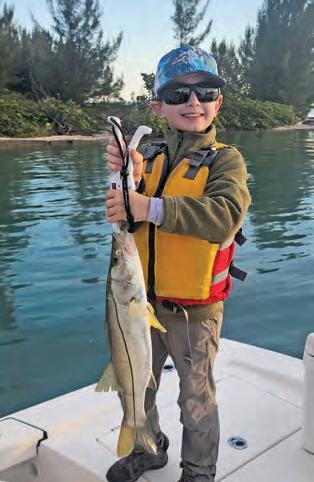
Capt. Scotty Gold
Miss Fort Pierce Fishing (772) 766-0191 www.fortpiercefishing.com
As May finally arrives, we’re happy to get out of the winter weather pattern and an unusually windy April.
Mango snappers have been biting and will only get better as we get into May, June and July. These fish will be moving around onto the rough bottom and start their heavy feeding before the spawning process. Mangos can be caught on a variety of baits, such as finger mullet, live or dead, mud minnows, sardines, and cut grunt plugs. Fish with 30-to-50-pound leader, preferably fluorocarbon on a slider rig with a 10- or 15-foot-long leader and a 3/O to a 5/O hook. Be patient and don’t be afraid to sit on a spot continuing to put down fresh bait waiting for their feeding time.
Also, this time of year mutton snappers start to move into the
Capt. Adam White
St. Lucie Flats Fishing Charters (609) 820-6257
www.stlucieflatsfishing.com
I’m sure everyone is ready for summer at this point. This had to be one of the worst weather winters through spring we have dealt with in several years. The good news is that better weather is right at our doorstep and there will be plenty of opportunities to get on the water in the upcoming months. May is our last month before the true heat of the summer kicks in. Get out and enjoy
shallows from 90 foot on in and start their feeding as well. Use a traditional a 40-to-80-pound leader, 15 to 30 feet long with the sliding sinker and a 5/O to 7/O hook. These fish will feed on fresh or frozen goggle eyes, cigar minnows, mullet sardines, and always grunt plugs. Look to fish on the sand and soft bottom adjacent to the reef, make sure you have a stiff rod with a powerful high gear ratio reel as you’ll be competing with the sharks, who will look to pray upon your catch’s distress as you’re reeling it in. Finally, we’re starting to see mahi around, so make sure you always keep a couple of spinning rods with a hook and some bait and easy reach. A 20-pound test set up would be perfect. Squid strips, sardine, or ballyhoo chunks always work well.
as many of the last “cooler” mornings that you can.
Snook fishing is always good through the month of May. The fish will be transitioning to their summer spawning areas throughout the month. Deeper cuts around the mangroves and bridges should hold a good number of fish. In the early hours the fish will be laid up shallow transitioning to deeper water as the sun gets higher. Free lining live croakers, pilchards, or greenies around the mangrove points, seawalls, and docks is a sure way to have some encounters with snook.
Tarpon will be setting up residence in their usual haunts for the summer throughout this month. Live mullet, greenies, or crabs are
great baits to present to laid up tarpon. Slow trolling or anchoring up and swimming your baits back to this fish is a great way to generate bites. Try to not “run the fish over” multiple times while trying to generate a bite. Use your trolling motor as much as possible and swing the bait through them.
The bridges, docks, and channel markers will all hold good numbers of snapper as the water temps start to warm in to the 80s. The pompano will also be making their trek back north and will provide many opportunities through the first couple weeks as well. Remember, a day is only as good as you make it. Go out with an open mind, try new techniques, and spend some time trying new areas.

As we get deeper into the summer months, the weather pattern will straighten itself out and be more favorable to fish. So, you will have many days to choose from.
The Miss Fort Pierce continues to sail daily on the all-day schedule with some 12-hour marathon trips to be announced. Also, we’re waiting







on the red snapper dates and as we have for the last two years, we’ll be fishing exclusively for them on those days. The Miss Fort Pierce is available for private charters, as well for fishing, cruising, or burials at sea.
Keep your lines tight and be safe out there. We look forward to meeting you on board.
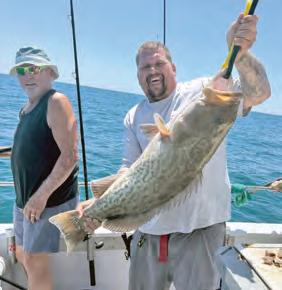


Capt. Gus Brugger
Pattern Setter Charters (772) 360-6787
www.WelcomeToSebastian.com
SEBASTIAN RIVER – May is the best month for tarpon and snook in the Sebastian River. Snook of all sizes can be found around docks and shoreline cover throughout the system. The docks between the railroad and US 1 bridges can hold some giant snook both day and night in May. Freelining large live mullet at dawn and dusk around the bridges and oyster bars of the lower river is a good way to hook a trophy and skipping D.O.A. shrimp and jerkbaits under the docks is productive when the sun is high. Tarpon from 5-to50 pounds will generally be found in both forks of the river above the railroad bridge with the larger fish often favoring the north fork. Casting D.O.A. TerrorEyz, MirrOdine plugs and flies to rolling fish is a fun and

productive way to target tarpon. Live mullet can also produce exciting surface strikes from tarpon, sharks and big jacks throughout the river.
INDIAN RIVER LAGOON – Snook will be utilizing the shoreline cover of the lagoon to set up ambushes for passing mullet and other baitfish. Any docks, mangrove overhangs and fallen trees warrant a cast with a jerkbait or D.O.A. shrimp.



Many local anglers and guides are reporting increased numbers of trout and reds in the Sebastian area. If you can find a school of bait on a shallow flat, preferably with grass coverage, larger trout and some redfish may be close by. Topwater and suspending plugs and weighted and unweighted jerkbaits will do the trick. The spoil island drop-offs will be good areas to look for action. Schoolie trout along with jacks, ladyfish, a stray pompano
and even some big snook can be found around many of the islands. .
SEBASTIAN INLET – Daytime anglers using live croakers, pinfish, greenies and mojarra around the tips of the jetties and rip rap areas of the inlet should find snook willing to bite. Fishing plugs and bucktails from the shoreline, jetties and catwalks at night is also a productive and popular way to catch a Sebastian inlet snook. May 31st marks the end of the snook season. Keep an eye out for small crabs drifting out with the tide as the bull reds and the occasional permit won’t be far away.
NEARSHORE ATLANTIC – Glass minnows and the predators that feed on them generally make an appearance in the late spring and early summer. It can be a true blitz with Spanish mackerel and bonito clearing the water chasing glass minnows while tarpon, kingfish, jacks and sharks lurk underneath. Fishing the nearshore waters of the Atlantic in May offers a great opportunity to find and catch a variety of species including tarpon and sharks weighing into the triple digits.
Don’t miss the variety of fish and fishing available in Sebastian in May.
Tight lines!


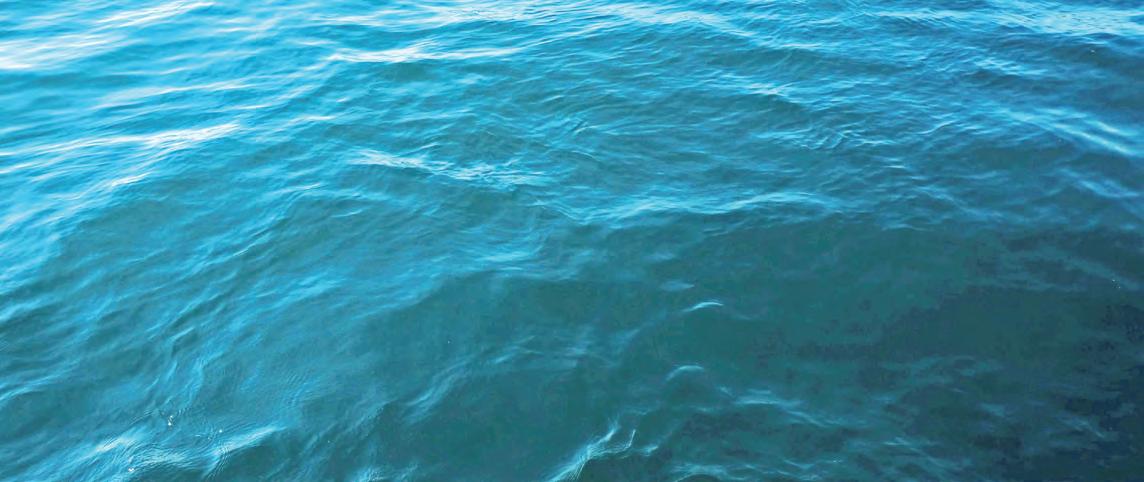

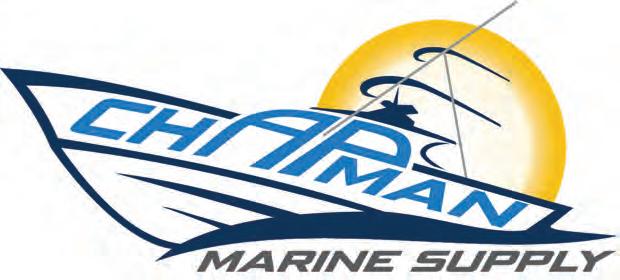


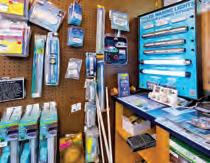

Capt. Terry Wildey
Big Easy Fishing Charters (772) 538 - 1072
captwildey@bellsouth.net
www.bigeasyfishingcharters.com
It’s grouper time! It’s been four months since the season closed but May 1st is the opening of grouper season. So up your gear.
I would recommend 80 lb. main line and leader. A #8 circle hook and enough lead to hold bottom for the depth and current your in. I like either a live grunt, pin fish, big pilchards or croaker for live bait. And pogies for dead bait. Best areas will be rock piles and ledges in 60, 90, 160, and 240 feet. Remember some time the best fishing is on some of the smallest marks of fish, on some of the smallest pieces of bottom. There should be some good trolling too. Look for that rip where there’s a temperature and color change, if there’s a weed line with flying fish or bait, then work it cause that’s where they should be. I usually start looking
in the 120-foot area but you may have to run out to 160, 240 or even 600 foot. Ballyhoo trolled with or without a lure will produce bites. It’s always good to have a few live baits pilchards or herring in case you see a picky one. Always have a bait rigged on wire run either on a down rigger or cigar lead. This will target that wahoo and it is pretty good at enticing a dolphin bite in that middle day time when the bite seems to slow down or stop.
For all of you fishing the reefs in the 60-90 foot range, expect some good action if you can sneak them by the sharks. There should be good numbers of mangrove snapper, triggerfish, lane snapper and remember with the sharks there will be cobia.
As always be courteous to your fellow angler, you never know when you’ll need a tow. Support your local tackle shops. We’re lucky to have them. If you don’t have access to a network of fishermen, then join a fishing club. I recommend Sebastain Fishing Club—90-plus members, now that’s a network! “Fish on, gotta go!”
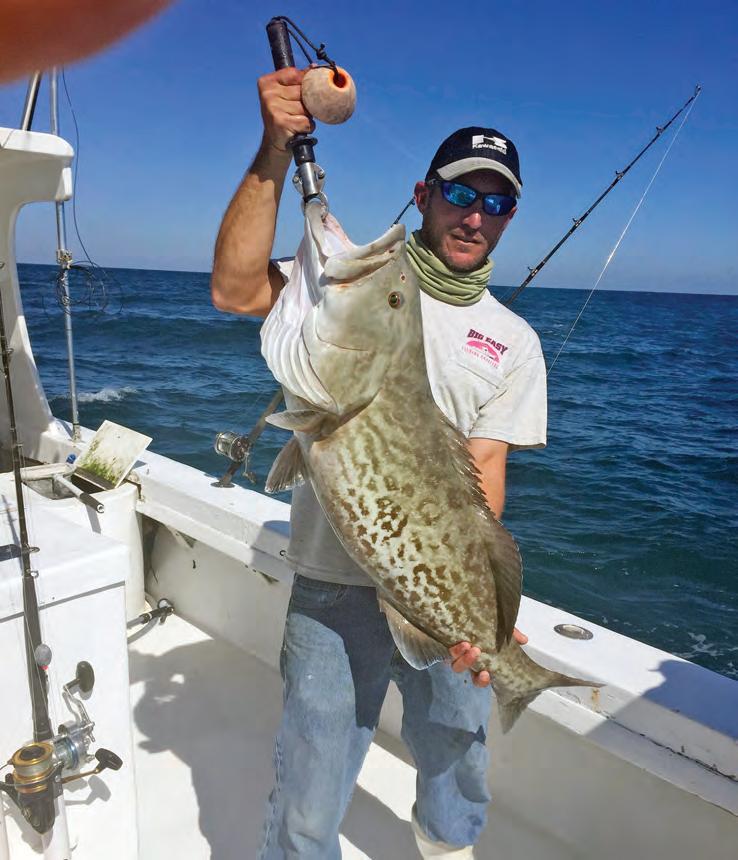
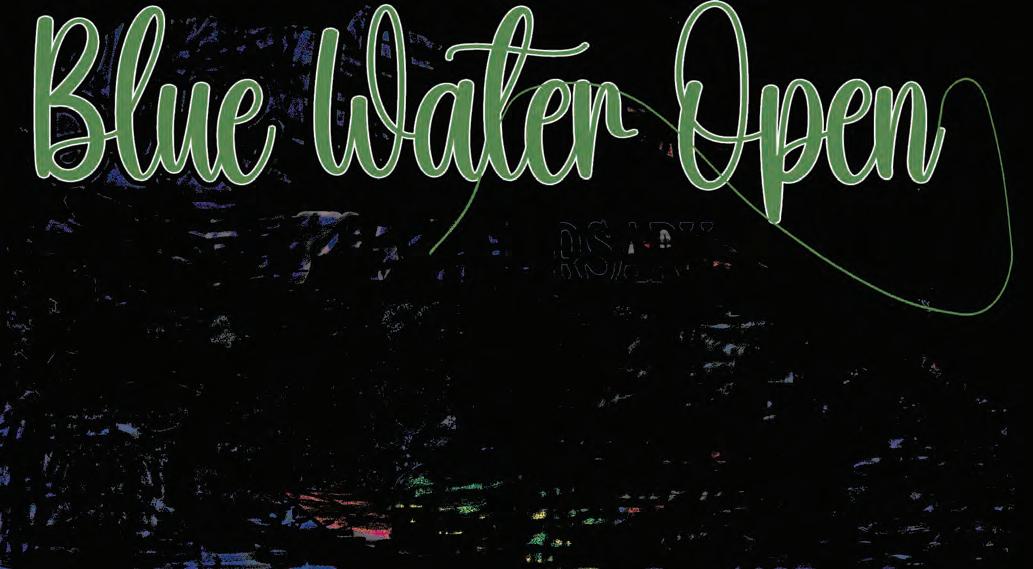
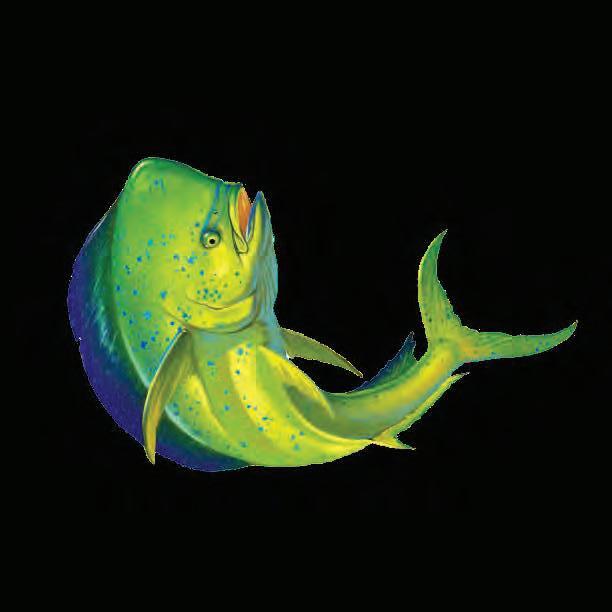



 PHOTO CREDIT: Capt. Terry Wildey.
PHOTO CREDIT: Capt. Terry Wildey.
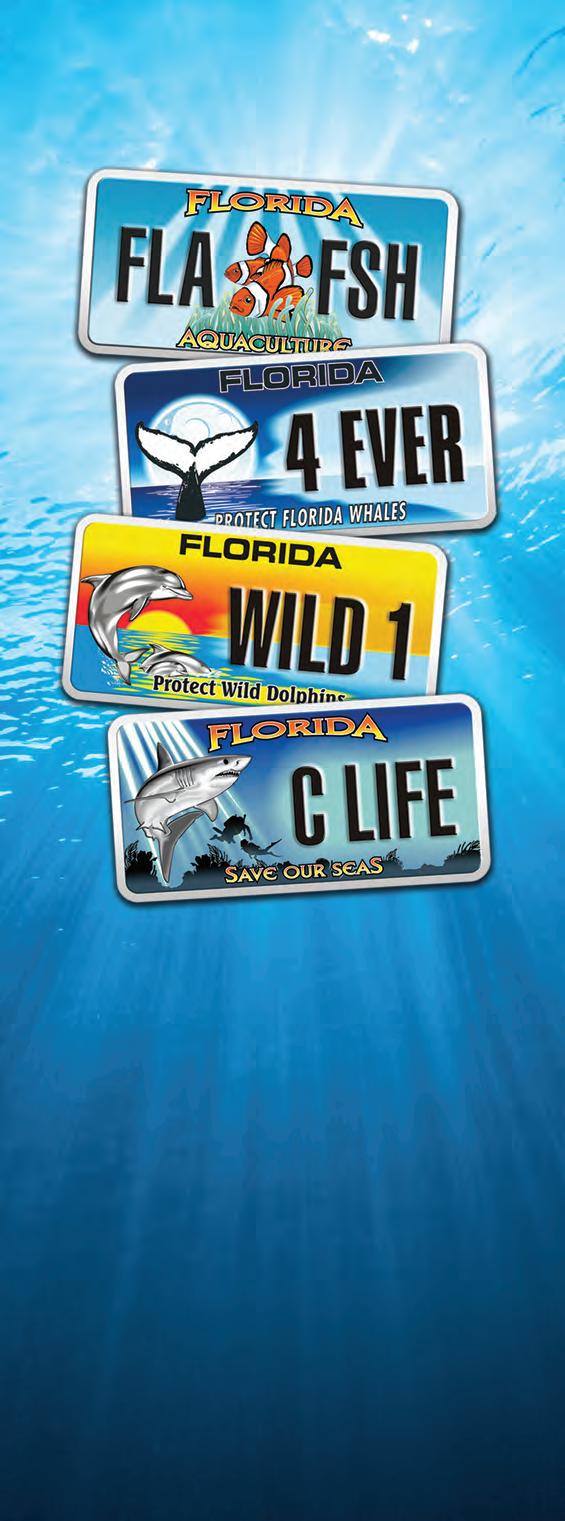
Chris Beachwalker Sharp (772) 263-0118 beachwalkerfish@gmail.com
May begins the time to really target snook from the beach. Spinning gear or fly, the spawn is beginning. You will have a good time catching and releasing numbers of snook. First light being the best time. Look for the bait along the beach and rocks. Rocky beaches will hold a lot of snook. Inlets being the best choice.
I like throwing Crystal Minnows from Yo-Zuri to target snook. You soft rubber guys, any paddle tail will work great. Fly guys, use a fly that mimics a mullet or greenie.
Big jacks are still around. Top water plugs first light are a great way to get a bite.
The water issues will be a problem so look to go to the north if you’re fishing in the river. Any location near the power plant will have better water, and also grass along the shoreline. Get some shrimp or catch some live mullet under a popping cork.
You can catch so many kinds of fish this time of year. Make sure you bring along a tape measure and know the regulations.
Take a kid fishing and enjoy the outdoors.


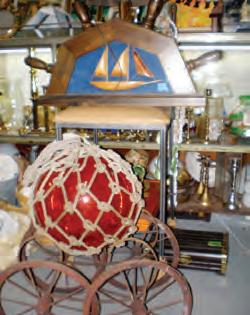


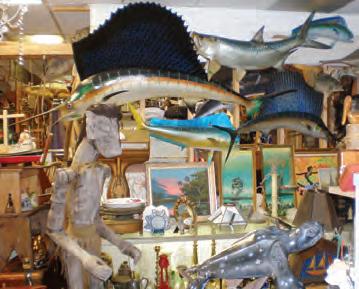

Brian Nelli
Pushin’ Water Kayak Charters (772) 201-5899
Brian@tckayakfishing.com
www.tckayakfishing.com
INSHORE: May is finally here! Snook will be back as the main target inshore this month. Fishing seawalls, bridges and docks are your best bet. Beef up your tackle a bit to be able to pull these fish from structure. I like using a Crowder Rods 7-foot 12-25 lb. E-Series. Teaming that up with a live mullet and circle hook on a 60 lb. fluorocarbon leader. For artificial a Yo-Zuri Lures top knock or D.O.A. Bait Buster are great options.
focus on the tuna using a vertical jig. A Catch Fishing jig dropped in 200to-300 feet of water can be deadly on these fish. Look to focus getting your jig to mid-water column and mix in a variety of different speed retrieves. Live bait goggle eyes, pilchards, threadfins, blue runners and mullet will all be good presentations. Deep diving Yo-Zuri Crystal Minnows are a great option as well for an artificial presentation.
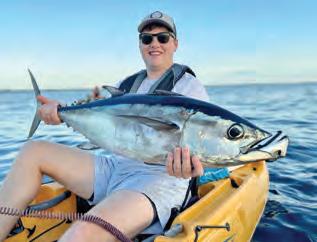
OFFSHORE: May really kicks off the best time to fish offshore. Weather, numbers of pelagics and bait should make this month enjoyable. Mahi, tuna, sailfish, wahoo and kingfish will all be in the normal trolling waters of 60-to-250 feet of water. I really like to
FRESHWATER: clown knifefish will be chewing this month. Prop baits will work well for peacock along shallow edges. Try 15-pound Yo-Zuri fluorocarbon leader and a 2/0 circle hook casting in and around structure and weed lines to get onto a few clown shiners. Look to fish mid-water column and below by adding a pinch weight to your leader and get that bait in their face.
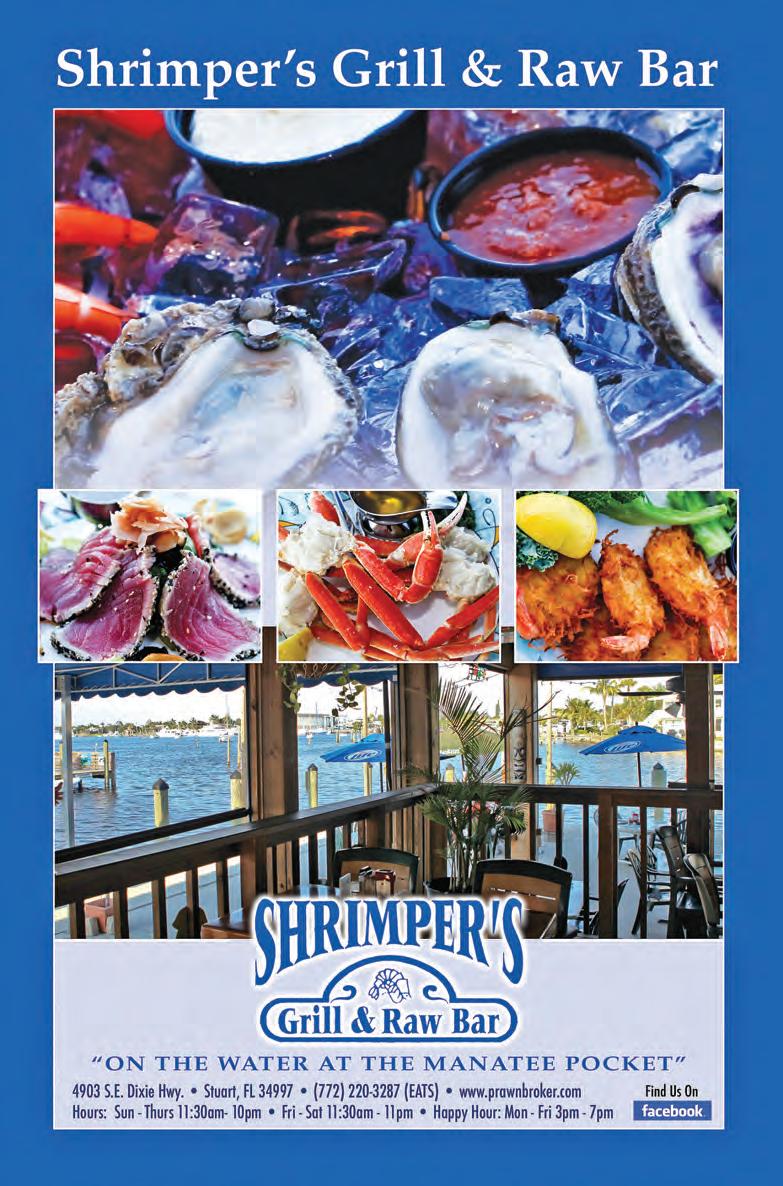
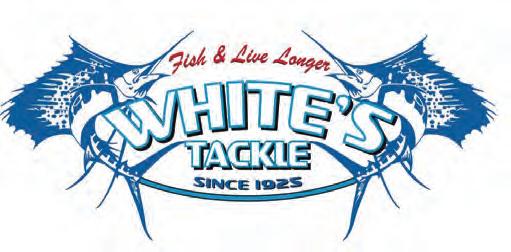



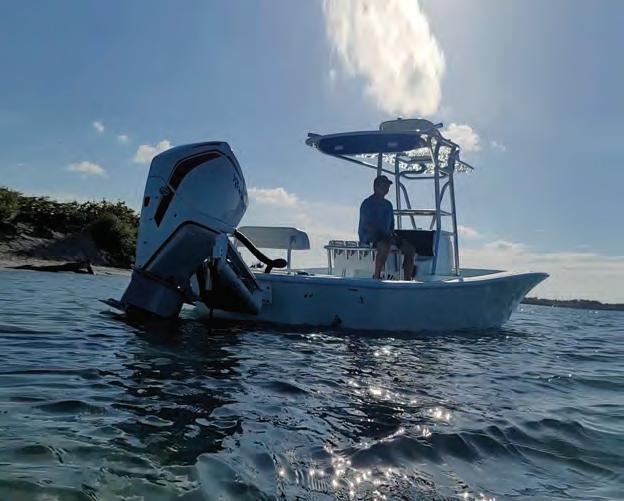


As a fly fishing guide, I’m tying all my flies myself. Not only does it save me a lot of money but, foremost, I can choose my favorite hooks and material.
In my approach to fly fishing, I tend to opt for hooks that are large and sturdy, regardless of the type of fishing I’m doing. I have a preference for short shank hooks with a wide gap, which I find suitable for various fly patterns. This might involve using a heavy wire nymph hook, even as small as size 22, for tying a delicate trout dry fly when I require a robust hook for targeting larger fish. I would sacrifice a better floating fly for a less floating fly but with a stronger hook--by the way, half sunk in flies typically work better anyway in my opinion.
I see a lot of flies in my boat (and back in my days on the rivers) and most flies are too plump, tied with too much material, too flashy and not balanced. One of the best fly tiers I met was Mikael Lindstrøm from Sweden and he changed the way I look at flies. He said, “There are a lot of tiers and you tell them take half of the amount of material….and then there are still some and you tell them …and from this half you take half of it!” It just shows how little materials we need - less is more!
This fly in the picture is one of
(772) 485-3321 Fly Fishing Corner
my two-minute guide flies, little flash and translucent when it’s wet and it catches a lot of fish--nothing more nothing less.
When I was guiding for trout, grayling, and Atlantic salmon I
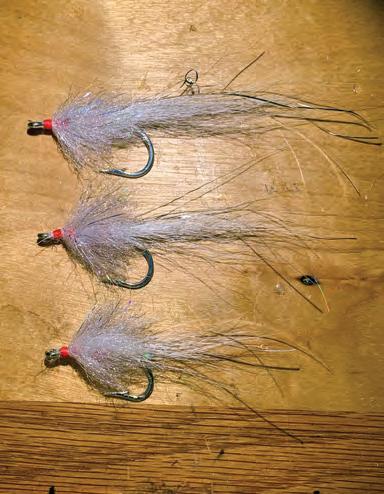
would apply the same ideas and it always helped me in my success. Enjoy and have fun experimenting and catching fish!
Capt. Michael Mauri www.mauriflyfishing.com
michael@mauriflyfishing.com



Can I go in the river?” is one of the most often asked questions I hear these days. Honestly the answer is not really clear. I am not an expert or a doctor, so I am not qualified to have an official position on health and safety, but like most people I do have opinions.
There have been billions of gallons of polluted Lake Okeechobee water discharged into the Indian River Lagoon and Caloosahatchee estuaries this winter during the dry season. There are blooms of microcystis aeruginosa, an often toxic and potentially deadly cyanobacteria happening in both estuaries and in the lake. These microorganisms represent some of the most ancient life forms on earth and they thrive


in warm nutrient rich water. There are several species of prokaryote adapted to live in this environment and several of them have evolved protective toxicity. Lake Okeechobee has been overwhelmed with fertilizer rich runoff for many decades and has become a hemmed-in, overfilled and poorly managed eutrophic reservoir. The tragedy is that what was the hydraulic heart of the state of Florida has become chronically diseased. The blooms of algae are not the disease but rather a symptom. The disease is a water management system that is designed and operated to benefit one species (us) and not the South Florida ecosystem.
We coexist on a planet inhabited by many life forms that can be



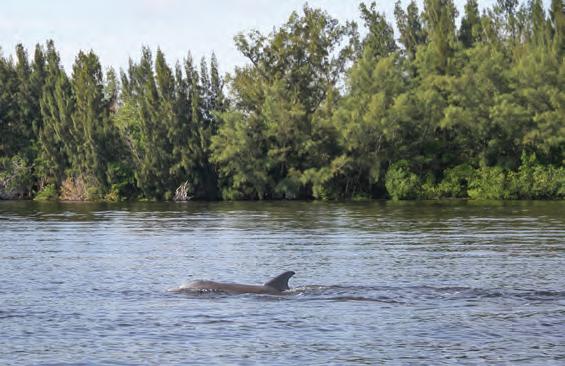
harmful and even deadly to us. Many microorganisms pose a threat to our health, when our capacity to defend against them is reduced, or their numbers overwhelm our defenses. When ecosystems lose their equilibrium, some lifeforms dominate with unpleasant outcomes. When a person goes in the river these days, there is a chance they could be exposed to a noxious dinoflagellate, cyanobacteria or even vibrio vulnificus. But they also will expose themselves to the emotional issue of responsibility for a poorly managed relationship that people have had with the natural places and ecosystems in Florida.



The Indian River Lagoon is still under siege. In the southern end of the Lagoon, Lake Okeechobee discharges and basin runoff dominate the insults to the Lagoon heath. In the middle section, it’s development pressure and wetland management that are the Lagoon’s nemesis. In the northern Lagoon it is the enlargement of the Space Center at Cape Canaveral that threatens the Lagoon most. We must generate the political will to do the right thing for people and the environment. The standard of the highest best use of land or resources is the most profitable for







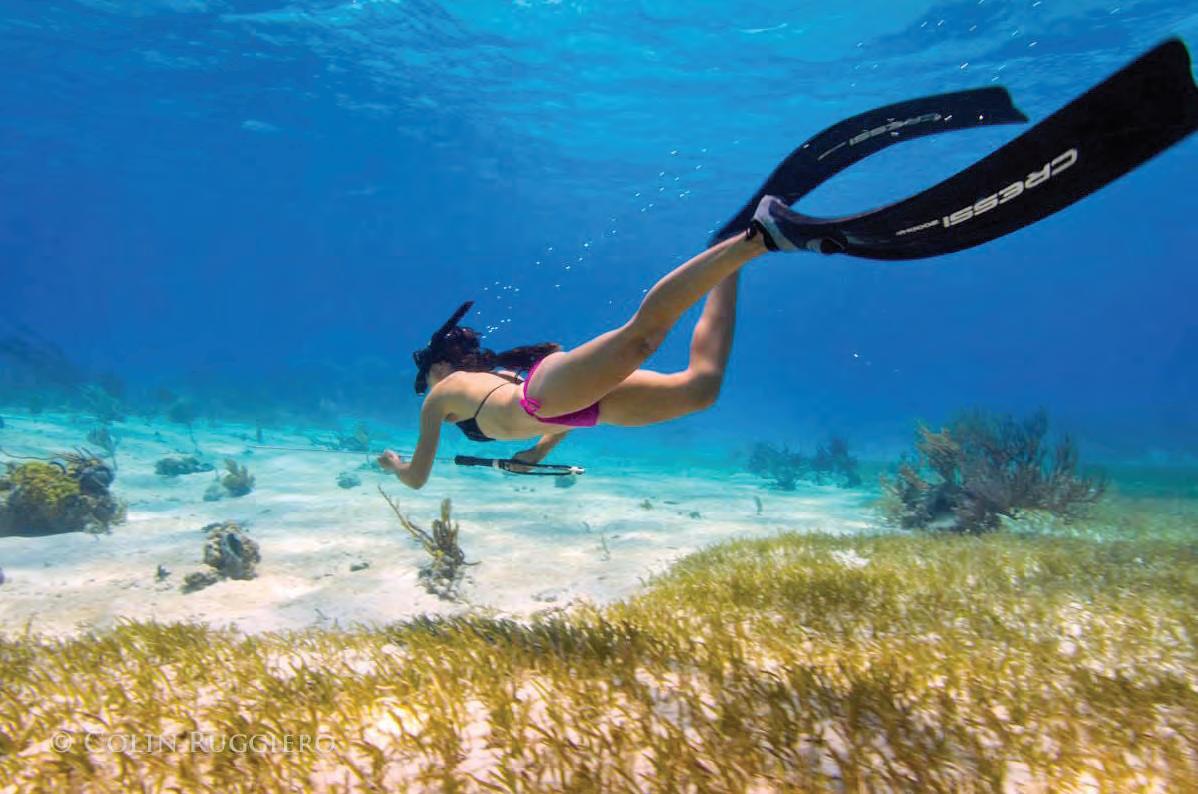




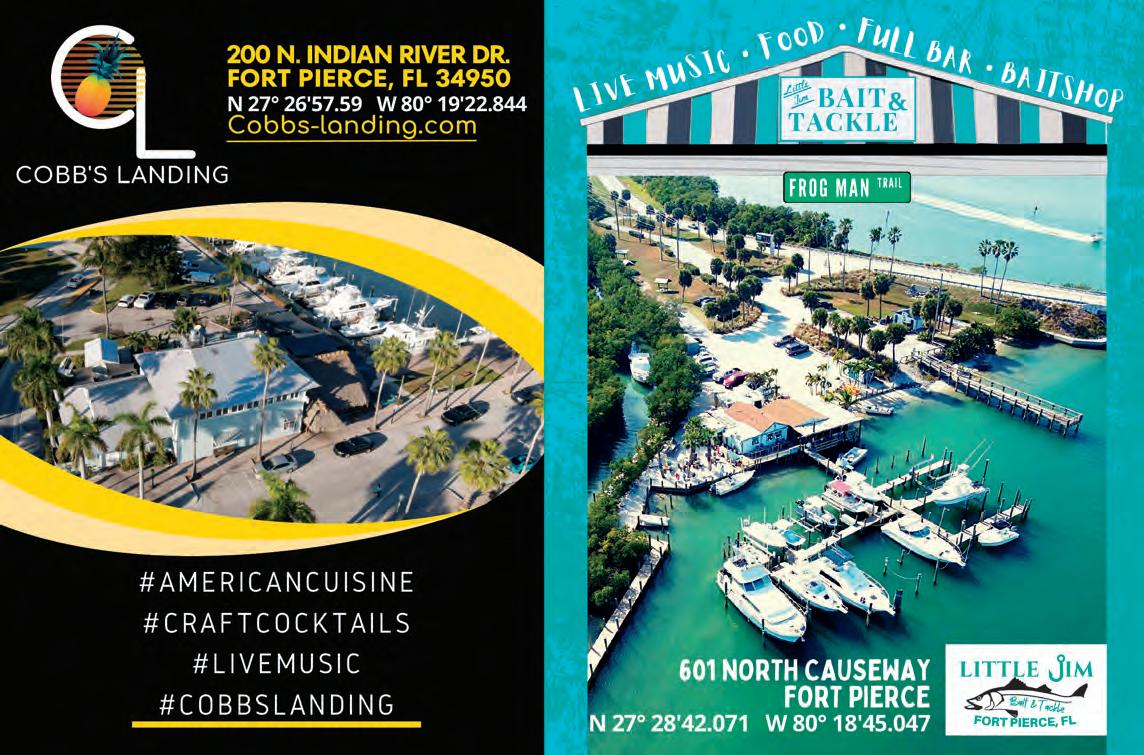

FROM PAGE 13
the owner, can no longer be the only measure of correct decision. We must enable regulation to be enforceable and recognize that permitting pollution doesn’t make it alright. We must recognize that we face an accelerating rate of change and there are many unintended consequences of our actions that we have to learn to anticipate.
Many of the operational systems that State and Federal authorities impose on water management make it impossible to meet our Clean Water Act pollution targets. The water management system, as funded and operated, is broken and dysfunctional. Our politicians grandstand and take credit for incremental improvements and point fingers at the past rather than take accountability. The Indian River Lagoon and nearshore reef should be protected as a national park and treasured as a remarkable and irreplaceable resource.
If you are a business owner and would like to learn more about the benefits of supporting Indian Riverkeeper, email Executive Director Jim Moir at IndianRiverKeeperFL@gmail.com or call (772) 341-4953.
The discharges from Lake Okeechobee into the St. Lucie River have finally and mercifully come to a close. After 41 days and 56 billion gallons - that’s BILLION with a B - the faucet from Lake O has been turned off.
Just in time, too. Enough lake water had poured into the estuary to turn much of the South Fork fresh. Salinity levels as far north as the middle estuary at the Roosevelt Bridge were near 0 twice a day for several hours. Oysters in the river and seagrass downstream were suffering.
Toxic algae had shown up at Four Rivers, around the Palm City Bridge and in the canal, too. With the discharges stopped, the algae dissipated.
Fortunately, the Army Corps of Engineers - the agency who calls the shots on how, when and where
lake water moves - had decided they would pause on March 30 for at least two weeks. A week later, Army Corps Jacksonville District Commander Col. James Booth announced the discharges to Stuart were done this spring.
But there’s a little bit of a problem. The lake level is at 14.99 feet as of April 10. The Army Corps has decided to use the Lake Okeechobee Regulation Schedule from 2008 which calls for the lake to be at 12.5 feet by June 1 - the start of the hurricane season.
Forecasters like Colorado State University are calling for 30 storms in the Atlantic basin, a record, as La Niña conditions take hold this summer. Does that mean Florida will see a storm or two or three?
If we do, will any of these storms drift over the Kissimmee River and dump buckets of rain? What we learned years ago was that 16 inches of rain multiplies into 4 feet of lake level. A lake at 18 or 19 feet
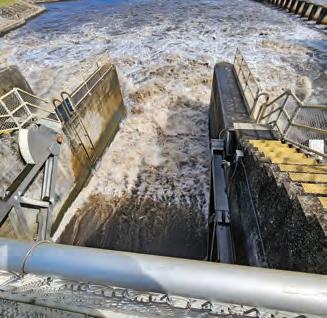
would definitely be a problem for everyone.
So lets’ keep moving water while it’s still dry. Let’s move it south while we can and west if we have to.
But Stuart and the St. Lucie River don’t need any more water from the lake. And let’s hope those forecasters are dead wrong.


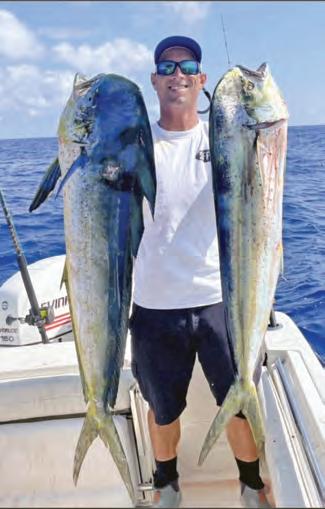
“These




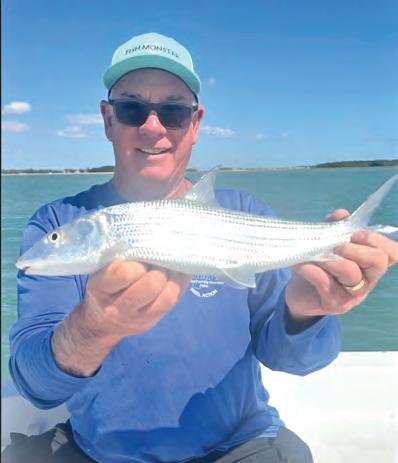
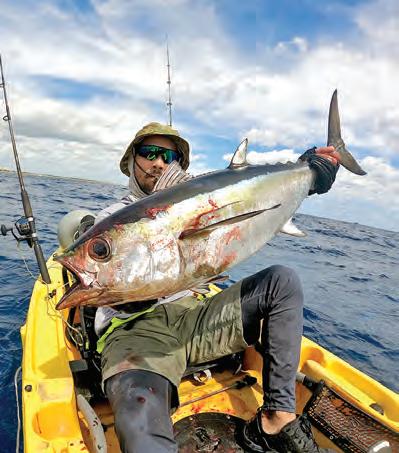


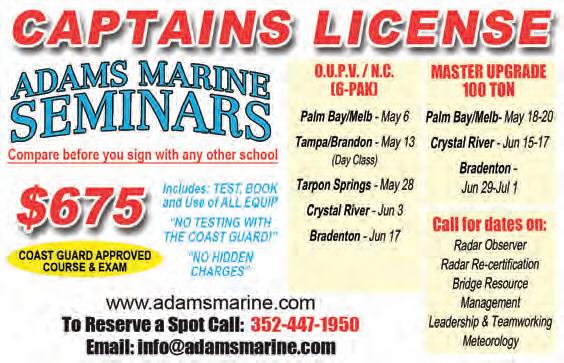









Pasco County scallopers will get a 40-day season in 2024 afer the Florida Fish and Wildlife Conservation Commission approved a change to the management region during a February meeting. Te season for the Pasco County Zone will begin July 10 and run through Aug. 18, annually.
Tese long-term season dates were informed by the 2023 post-season monitoring results by FWC’s Fish and Wildlife Research Institute as well as input received from stakeholders at virtual public workshops, in-person meetings and public comments.
“Along with moving away from the Independence Day holiday, the longer season will increase both the public’s safety and access to one of our state’s most fun family resources,” said FWC Commissioner Preston Farrier. “ Tere will be many positive impacts for the local communities.”
Te Pasco Zone bay scallop region includes all state waters between the Hernando/Pasco county line and the Anclote Key Lighthouse in northern Pinellas County, and includes all waters of the Anclote River. For complete regulations, visit MyFWC.com/Scallops.
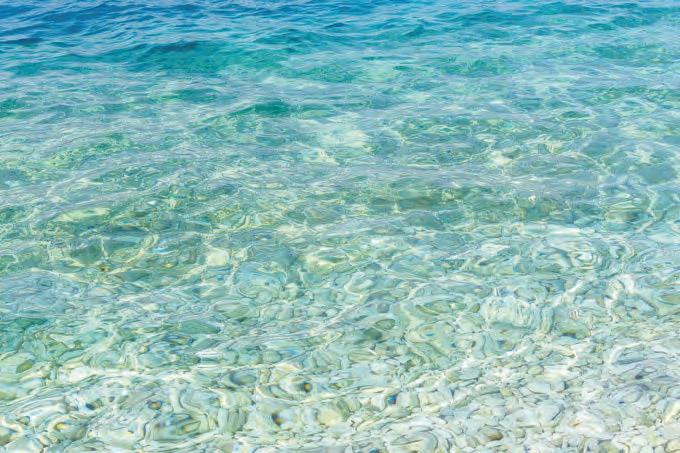






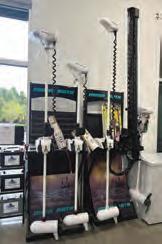
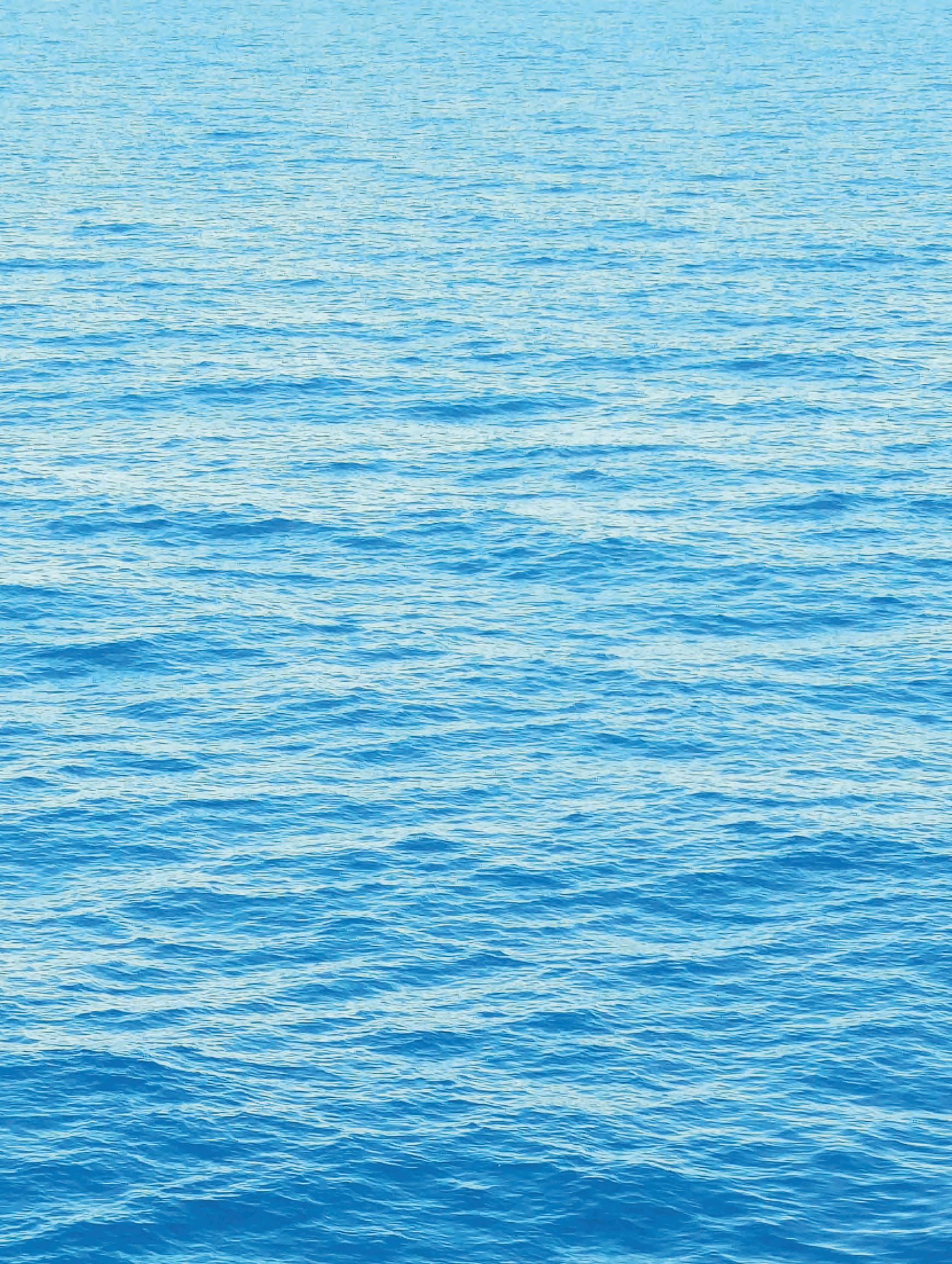











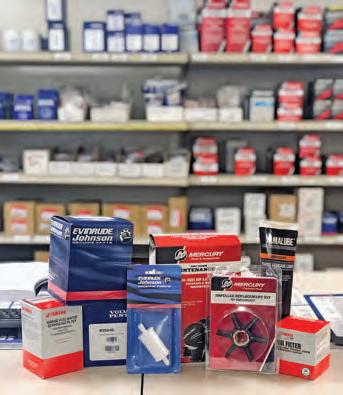
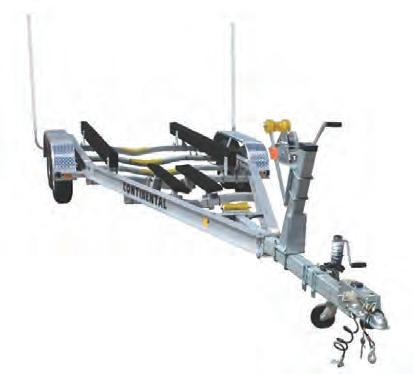















 By A. deGruchy
By A. deGruchy

You’ll fnd some real giants lurking in Florida waters, ofen hanging out near wrecks, structures and mangrove roots. Te notorious Goliath grouper is a massive, territorial and iconic Florida fsh that has experienced a remarkable comeback in recent years, prompting the Fish and Wildlife Conservation Commission (FWC) to introduce a lottery system for limited harvest.
It’s been quite the journey for these giants of the sea. Back in the 1990s, they were critically endangered, and conservation eforts swung into action


to protect them. Trough the 2000s, Goliath grouper started reappearing in South Florida’s coastal waters in greater numbers. Some saw this as a positive thing, while others focused on the negative potential impact on the marine ecosystem.
With their enormous size, reaching lengths of over 8 feet and weighing up to 800 pounds, these beasts could easily throw of the delicate balance of fsh populations and reef habitats. Despite the initial concerns, strict conservation measures and protective regulations led to a remarkable population rebound. Tey once again rule as apex predators; some would even call them bullies!
We were lucky to receive one of the tags to harvest a Goliath this year. Tere were specifc protocols to follow. Te FWC divided it into Category I and Category II, restricting the fshing areas. Additionally, there was a stipulation to use non-ofset, non-stainless steel hooks to improve survival chances. Tere was also a research element involved. We were issued a kit for taking samples and instructions on where to drop of the carcass afer our fsh was cleaned.
Goliath grouper have big appetites, eating large quantities of food to sustain their massive size. Tese underwater monsters can consume up to 5 percent of their body weight in a single feeding, so an average adult weighing around 400 pounds might eat 20 pounds. Tat’s a hefy meal by any standard. Tey also eat pretty much anything that moves, and they love crustaceans, especially stone crabs.
With our tag, we managed to catch one that fell within the slot size of 24 to 36 inches set by the lottery. We gave it a try, and to our surprise, it tasted great, like a meatier version of traditional grouper: white, faky and juicy, probably due to their diet.
Goliaths are a lesson in how tricky the balance can be between preserving our marine life and using it responsibly. From nearly disappearing to bouncing back in a big way, these amazing creatures keep us hooked on their journey. Tey remind us how everything in the ocean is connected and how important balance is. Whether we’re rallying to protect them or frying them up for dinner, Goliath grouper are a signifcant part of what makes Florida’s marine ecosystem so unique.
To see the episode of our Goliath Grouper Catch & Cook, go to “Bean Sportfshing TV” on YouTube. For more information about FWC’s Goliath Grouper harvest program, visit: www.myfwc.com.



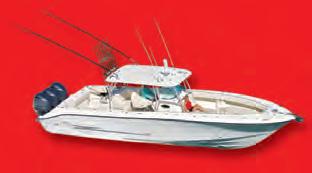
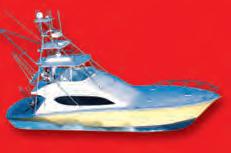

 By Emily Hanzlik
By Emily Hanzlik

Amberjacks are powerful fsh with a never-quit attitude that makes them prized among anglers who live for the battle. Tey are a widespread species, with a pretty much worldwide range and prefer depths from 60 to 250 feet. Typically, they live near reefs and shipwrecks in small schools. Tis is due to their diet being mostly smaller fsh, crustaceans and squid that live around these structures.
An amberjack might live its whole life around these structures and only move due to lack of prey or for spawning. Amberjacks broadcast spawn, but usually in smaller groups. A single female can produce anywhere between 20 and 50 million eggs. Afer spawning, these fsh participate in some sort of courting and will stay in pairs. Adults can weigh up to 200 pounds and grow to 6 feet in length with a lifespan of more than 15 years. Most angler encounters are with fsh up into the 40-pound range.
Ofshore and nearshore in appropriate depths, you’ll want to look for AJs around structure. Most depthfnders identify structure as dark red patches that jut up from the baseline of the ocean foor. Good structure will have plenty of life around it, which will be represented on the screen as yellow and green blotches of bait and baitfsh.
Once you fnd your spot, use a typical bottom rig with enough weight to keep your bait on bottom in the current. Both live and dead baits work. It’s a good idea to butterfy larger baits, which is cutting the spine and ribs out while leaving the head and skin-on flets intact. For live baits, fsh any baitfsh in the 3- to 5-inch range.
Jigging is another fun way to target these monsters. My friend Nick DeGannaro recently caught a giant AJ on a jig, and here are a few tips he provided.
“Dropping a slim-profled jigging spoon and ripping it back up towards the surface usually elicits the bite, which will stop all motion you had going as the rod doubles over and line starts disappearing of the spool,” he said. “It really is a thrilling fshery, but one you have to show up prepared for, as it will push your tackle to the limits.”
DeGannaro’s go-to outft for speed jigging is an 8000-sized reel flled with 30-lb. braid paired with an E-Fish-Ent Custom Rods Phantom Jigger 250. He fshes a 40- to 60-lb. fuorocarbon leader, depending on water clarity, and either a glow or shiny jig.
Amberjack regulations vary on the Atlantic and Gulf coasts, so check the regs before you go. While some enjoy the buttery favor of amberjack, others are turned of by the tapeworms most AJs have in their meat. Whether you plan to keep one or not, these reef bullies sure are a lot of fun to do battle with.
Emily Rose Hanzlik has caught more than 60 IGFA world records in various categories. Find her on social media @emilyhanzlikoutdoors.


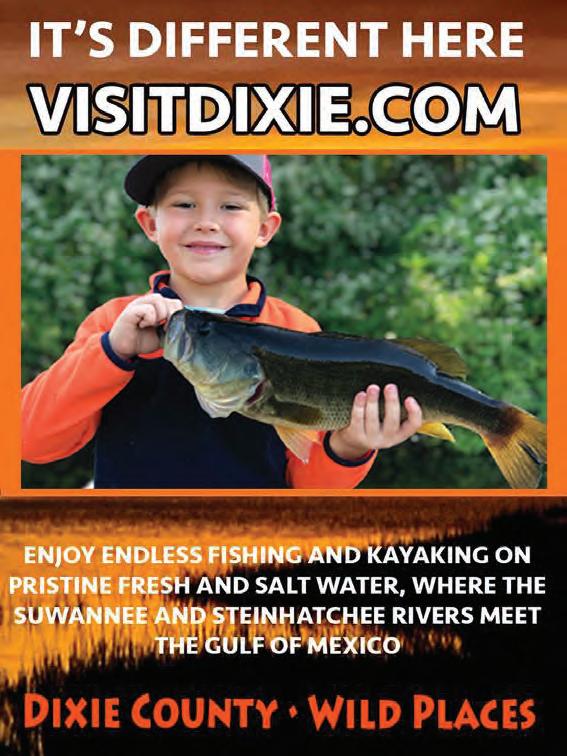
 By Richard Matteson
By Richard Matteson
Surf casting is a great and inexpensive way to catch quality fsh. I’ve landed big tarpon and snook from the beach and small panfsh like whiting and croaker. You can catch dinner or experience the thrill of battling some the top sportfsh in the world.
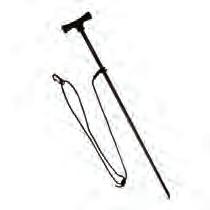
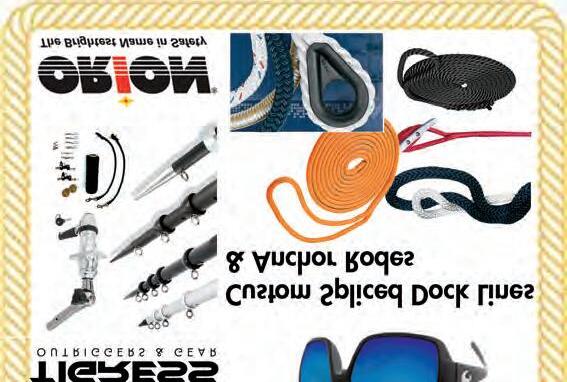


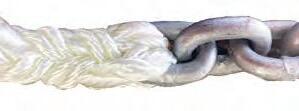

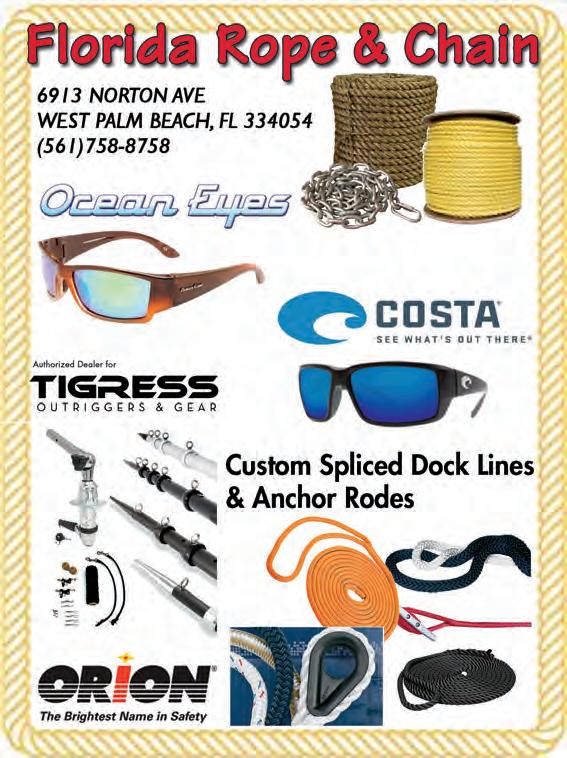
GEAR: I carry two rods, one for big fsh and one for smaller fsh, so I’ll be prepared for whatever I encounter. My lighter set-up is an 8-foot mediumaction rod with a spinning reel flled with 10- to 20-lb. braid attached to 12 inches of clear 30-lb. fuorocarbon leader.
For tarpon, big snook, sharks and big jacks, you need 40- to 60-lb. braid (200-300 yards) with a 60- to 80-lb. clear fuorocarbon leader. For big fsh, you need a heavier rod and 6000-8000 reel with a bigger spool for more line.
LURES: Tie your lures to your leaders with a loop knot. My favorite lures include 4-inch DOA paddletail (pearl white or silver sparkle) rigged on a 3/8oz. chartreuse jig head; a 1- or 2-oz. spoon (silver Krocodile or gold Johnson); topwater plugs (Skitterwalk, Zara Spook, or various chug plugs); and shallow running crankbaits. If it’s windy or rough, you might need to fsh heavier jigs or spoons.





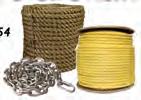
BEST TIMES TO FISH: First light and an hour before dark are the best times to fsh. Te best tides are early incoming and early outgoing. Avoid slack tides. I also use moon phases, which regulate the amount of rise and fall during each tide.
FIND THE FISH: Find the bait, and you’ll fnd the fsh. Bird activity is the most obvious sign of bait in an area. Tis could be pelicans, gulls or even small terns nipping at baitfsh. You also need to be able to spot baitfsh. Identifying the little splashes or dark mass of a school is critical.
I walk the beach looking for bait. When I see bait, I stop and fsh. Birds aren’t always there, and the bait just pops up for a few seconds and you need to be ready. Go to a beach access, get out of the car and scan for birds. If you don’t see any birds, it might be worth going to another beach access, but remember that fnding bait is sometimes just a matter of moving down the beach a hundred yards.
TECHNIQUE: Identify the feeders. Bluefsh, jacks, mackerel, ladyfsh, kingfsh and barracuda are all aggressive feeders that like fashy lures and fast retrieves. If you’re fshing for tarpon, a slow steady retrieve is better. Snook will hit a slow retrieve and can also be caught in shallower water by jigging of the bottom around the frst cut. Whiting, pompano and croakers are all easily caught twitching a lure of the bottom, but you must get it out to them.
Richard L. Matteson is a long-time contributor to Coastal Angler Magazine who reports for the Stuart Rod and Reel Club. Contact him at (336) 414-3440.

The fight for an unforgettable catch begins here, where 100,000 square miles of deep blue waters play home to speedy blue marlin and wahoo, massive tuna and brawny mahi mahi. Deep sea fishing in The Out Islands is a battle of wits, a test of perseverance, and a chance to prove your angler’s instinct. See what could be waiting on the other side of your line.



is true for human visitors, too. Te summertime fshing in Alaska can be astoundingly good.
Imagine awe-inspiring natural landscapes cascading into a sea teeming with marine life. I’ve lived and fshed in Fiji, Te Bahamas, Hawaii and Florida. Tey are all spectacular, but there’s nothing like an Alaskan summer.
My own journey to Alaska began as a young man when I dreamed of one day fshing there. Like most young adults, I strived to get good grades and work jobs to pay bills and tuition. I took the mainstream approach of university studies. Shortly afer graduation, I obtained a position with a fnancial frm. I loved the work; I hated the monotony of a nine-to-fve work life. Afer a year and a half, I called it quits and fed to Alaska with no contacts or the faintest idea of what it would be like. It’s now been 12 years, and I still call Alaska home for the summer fshing season.
I operate Ketchikan’s Finest Fishing Charters. My fshing partner, Jake Smith, and I consider ourselves lucky for the opportunity to provide topfight experiences for clients every day.
Te prime fshing season in Ketchikan is May through September, and we provide customized charters for any group, regardless of age or experience. You can expect to catch halibut, salmon, rockfsh, cod and even Dungeness crab. We ofer full-day and multi-day packages, with daily catches aggregating over hundreds of pounds. In addition, we ofer cruise ship charters for salmon and halibut to ft each visitor’s port times. With pick-up and drop-of from downtown ports, it’s the best way to fsh during an Alaskan cruise.
John Muir, the famous naturalist, wrote that you should never go to Alaska as a young man because you’ll never be satisfed with any other place as long as you live. From frst-hand experience, I believe this to be true.
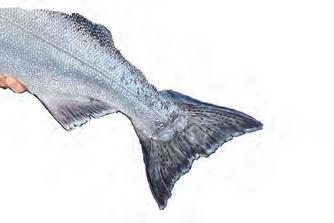
Alaska still holds riches beyond one’s wildest dreams. Hundreds of millions of salmon food into their native streams and rivers to spawn each year. Giant barn-door halibut scour the deep seas. Humpback whales migrate thousands of miles to feast on Alaska’s annual summer bounty. Eagles, bears and other wildlife abound and celebrate summer, when it’s a feast for all. Tis
Imagine riding to the richest Alaskan fshing grounds with humpback whales breaching on the horizon. Eagles soar overhead and swoop to pluck salmon from the sea. Te fshing is insane, with massive halibut and lightsout salmon fshing. It’s sensory overload in a good way, and an experience that should be at the top of everyone’s bucket list.
If planning a fshing trip in Alaska seems daunting, know that modernday Alaska is accessible to all. Tere’s no need for foat planes or dog sleds. Ketchikan is a two-hour plain ride from Seattle in a commercial airliner that touches down in a modern airport. From there, everything is at your fngertips.
Check out Ketchikan’s Finest Fishing Charters at ketchikanfshingtrips.com. Contact them (907) 617-4717 or e-mail ketchikanfshingtrips@gmail.com.



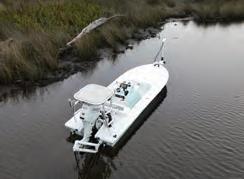






Boating is unpredictable but with a BoatU.S. Unlimited Towing Membership, it’s easy to keep your cool if something goes wrong. With more than 600+ red boats on the water, TowBoatU.S. will have your back.
Anglers



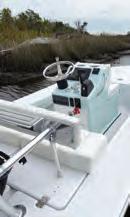




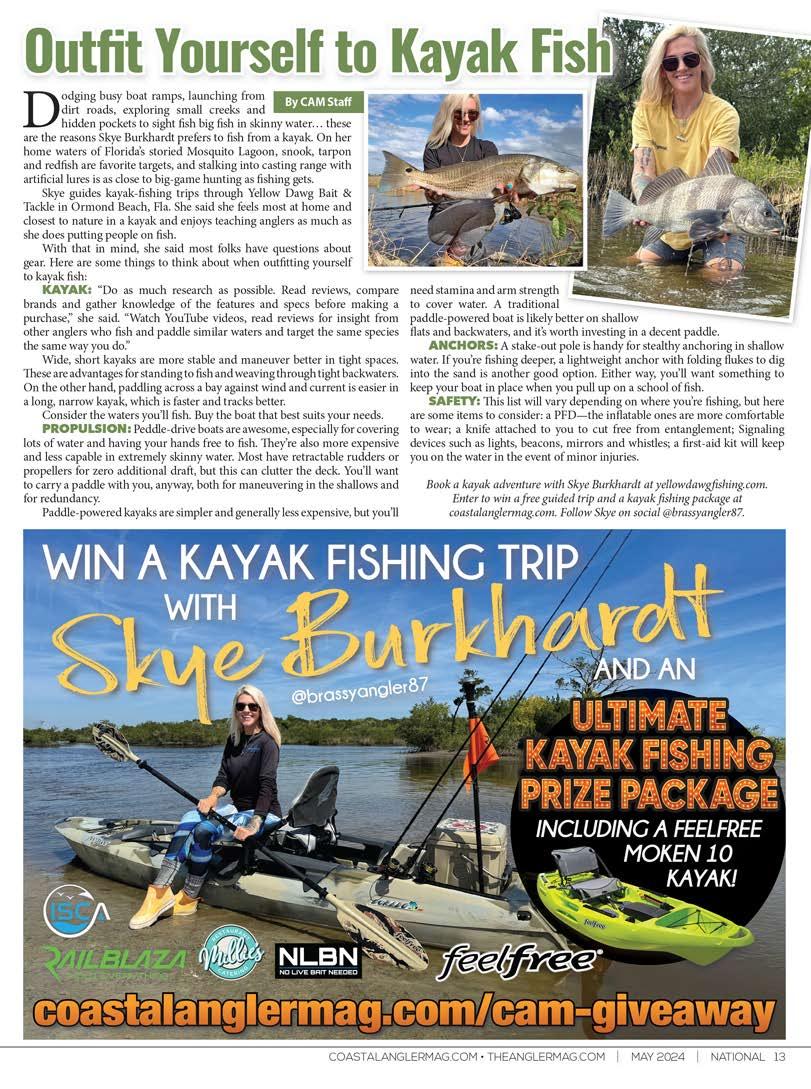




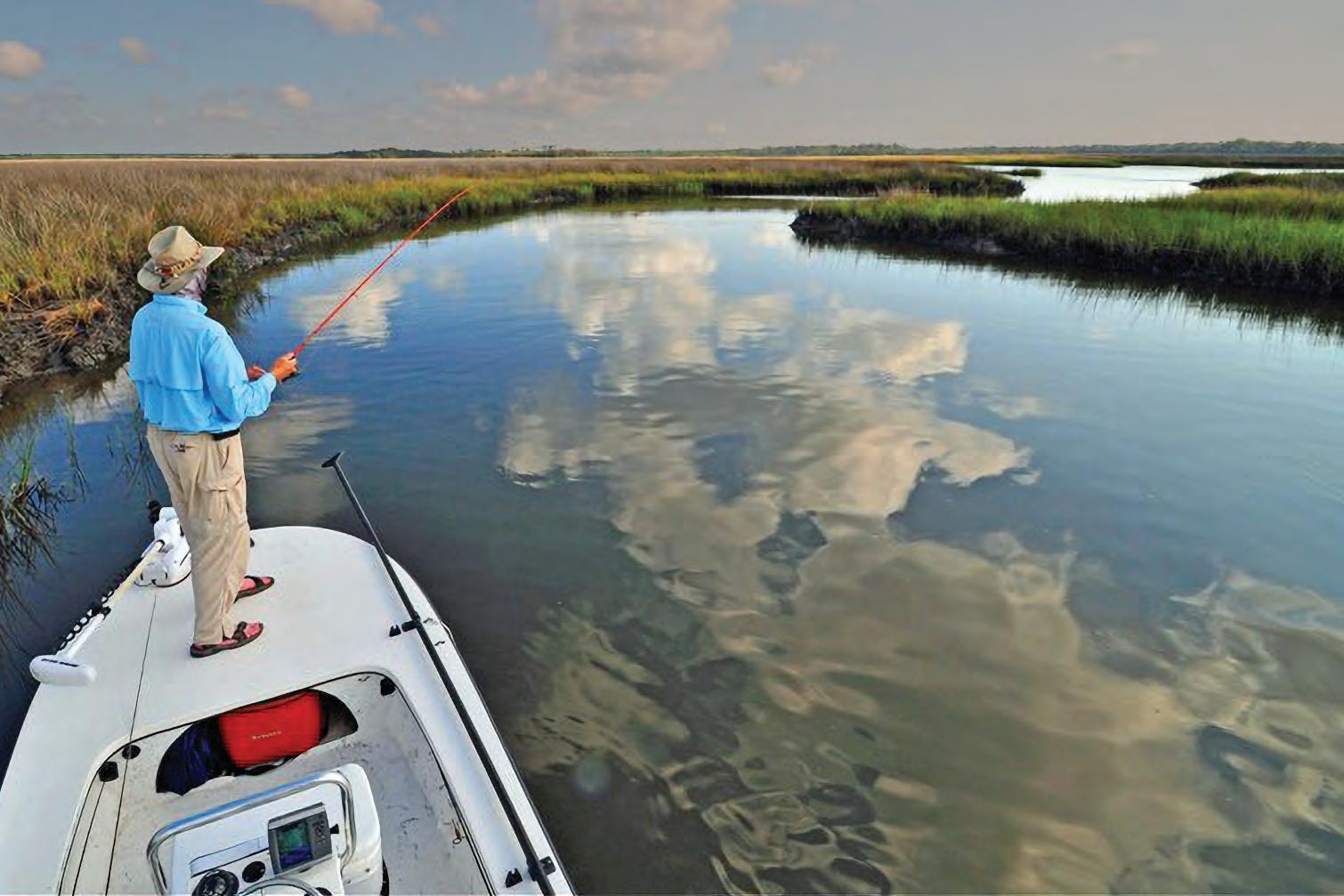
The year is 2024, and technology is getting better and better. Whether it be the retail tech business or the fshing industry, there are tools now available that a few years ago we would have never thought were even possible. One of those technologies is forward-facing sonar (FFS). Tere’s a lot of debate about FFS in the fshing these days, but there’s no denying it’s an amazing tool when used correctly.
I have been using this technology since its earliest stages, and catching fsh while looking at my screens has become one of my favorite ways to fsh. It is extremely cool to watch a fsh eat your lure in real time, and it can also teach you a tremendous amount about what is happening under the water. Not only do I use this tech to fnd and catch fsh, I use it to pinpoint bait and areas with life, fnd sweet spots and diferentiations in an area, and eliminate dead water much faster ever before.
Figuring out how to use this new technology can be a little frustrating at frst if you don’t quite understand what’s going on. Spending time on the water, doing as much research as possible or getting someone experienced to teach you are the best ways to get an upper

hand. Fishing lakes where catching fsh isn’t very hard in general helped
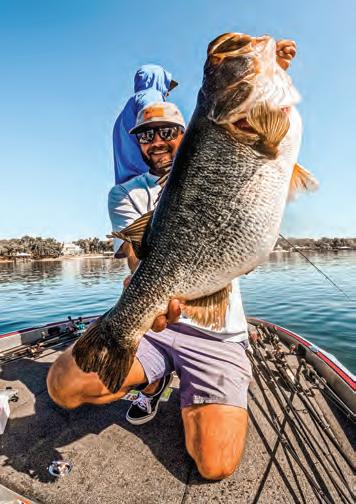
me tremendously with deciphering what I saw using FFS. Smallmouth fshing in the north country was a big helper, as these fsh are aggressive and you get many opportunities to present baits and dial in your skills.
Another thing that helps you understand the picture on your screen is objects that are visible above the water. Point your transducer at a bridge, dock, tree or grass, and picture in your head what should be under the water while also watching your screen. Tis will help beginners dial in settings and get a better understanding of what is displayed. It takes time, patience and dedication to learn, but don’t get frustrated and try to have fun with it.
Tere are varied opinions on forwardfacing sonar and its place in the fshing industry, but it isn’t going away, it will only get better! Some of the coolest things I’ve witnessed and some of my best fshing days were due to the electronics on my boat.
Spending the time to learn how to use FFS is well worth the efort. Te technology is dominating pretty much every tournament right now, and it absolutely revolutionized the way I break down a body of water.
Tere are many resources out there to help you in your learning process and people like me who are always willing to answer questions. Don’t be afraid to reach out, tight lines!
Tyler Woolcott is a professional tournament angler and guide. Check out his website at www.tylerwoolcottfshing.com.
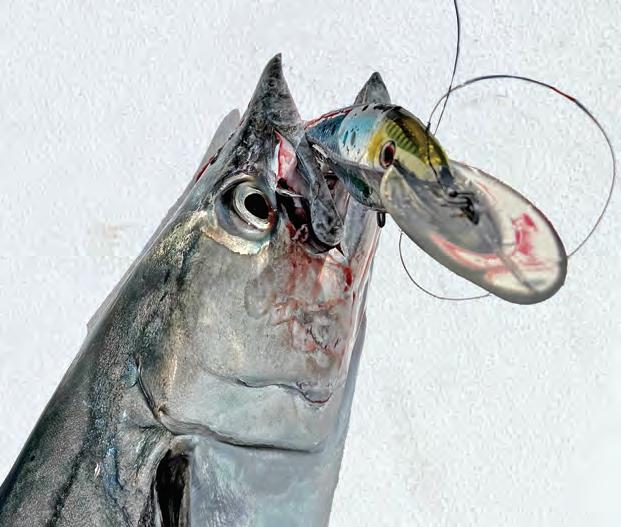
It’s well known that some of the best kingfsh fshing starts with a livewell full of frisky baits. Unfortunately, catching them can eat up much of your fshing time. Afer that, it can be hours of bump trolling waiting for a fsh to hit. Fortunately, for those who just want to head out for a couple hours of fun and blistering runs, it can be accomplished with artifcials. Besides getting you straight to the fshing, you can cover a lot more ground by pulling hardware, and it is not nearly as tedious.
Like using live bait, wire leader is crucial. Kingfsh have razor sharp teeth that will go through even stout mono with little efort. I prefer single-strand wire and usually opt for at least #7 (80-lb.). Single strand tends to kink afer just one fsh, but that’s not always a problem when pulling big plugs, as they will pull the wire straight. Also, watch your split rings. Tey can weaken the loop where it attaches to the lure, so be sure to constantly inspect your connections. I like to cover many diferent depths in the water column when trolling. I

start with a shallow runner like the Nomad 190 AT that runs 3 to 5 feet deep, which I set way back. I also like the Nomad Madmacs that run just slightly deeper. I run it 30 to 50 feet in front of my shallow long-bait to facilitate turning. Ten I like to go deeper with a DTX Minnow 165. I run that close to the boat and right under the prop wash. Tis is hands down my most productive bait. I fnd speeds of 6 to 8 knots usually work well. Tis allows me to cover a lot of ground and is fast enough to elicit a strike. I ofen fnd any slower and the fsh don’t seem interested. Te other great thing about these lures is the hooks are very large, and they stick once they make contact.
When you’re trolling the deeper-diving DTX 165s, you will need a reel with some signifcant drag, as these big-lipped plugs take a lot to hold in place. Te Accurate BV600, with its dual drag system, is a great reel for the job. Te BV X76H matches perfectly with it and is a great multi-duty trolling rig that doubles as an awesome grouper rod. Even though you don’t need a super-light tip, like with live bait, a rod that gives is a plus with these sof-mouthed fsh.
As for spots, look for hard bottom that holds bait. Wrecks and reefs are great, too. It sometimes pays to make wider circles around these structures to get away from the barracudas.
With a few lures and some know-how, you can easily head out and catch some kings without dedicating an entire day to your eforts.
Will Schmidt is a seasoned tournament anglers who has been writing about fshing for more than three decades.




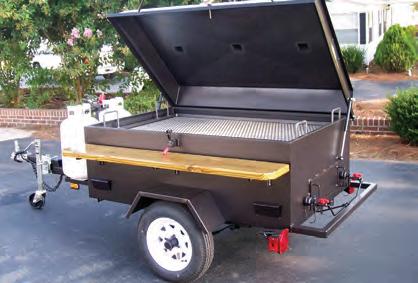





















The heritage of American Silver Dollars is rich and diverse, marked by stunningly beautiful designs, leading to an enduring desirability in the hearts of collectors around the world. In this iconic U.S. Silver Dollar set, spanning nearly 150 years, you’re getting FIVE American Silver Dollars issued over the last 15 decades that each reflect the history, culture and economic aspects of the United States.
Each of these U.S. Silver Dollars is sought-after by collectors individually, but this set includes every design of U.S. Silver Dollar in American history, issued from 1878 to 2024!
Morgan Silver Dollar: First struck 146 years ago in 1878, the Morgan has a historic legacy as the coin that helped build the American West. Minted until 1904, then again in 1921, this 90% silver coin with its iconic Lady Liberty design is the most collected vintage Silver Dollar in the world. Extremely Fine (XF) condition coin included in set.
Peace Silver Dollar: With a beautiful design memorializing peace following the end of World War I, the 90% silver Peace Dollar was intended as a one-year only release struck in 1921—but it proved so popular with the American people, it was struck until 1928, then again in 1934-35. Extremely Fine (XF) condition coin included in set.
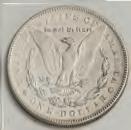

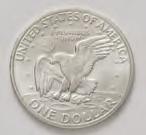





Eisenhower Dollar: The last circulating U.S. dollar coin, the Eisenhower Dollar, aka the “Ike Dollar,” was prized by Americans, with its design featuring war hero President Dwight D. Eisenhower, backed by an image symbolizing the Apollo II moon landing. First struck with silver 1971-1976, the Eisenhower Dollar in this set was struck in 40% silver for collectors, and you will receive a coin in Brilliant Uncirculated (BU) condition.



















Silver Eagle Type 1: The first-ever U.S. Silver Dollar minted in 99.9% silver, these coins were first minted in 1986 following President Ronald Reagan’s signing of the Liberty Coin Act into law on July 9, 1985, which authorized the U.S. Mint to strike America’s new silver bullion coin. This gorgeous Silver Dollar features the original, revered Type 1 “Heraldic Eagle” reverse design by John Mercanti, 12th Chief Engraver of the U.S. Mint. Brilliant Uncirculated (BU) condition coin included in set.
Silver Eagle Type 2: In honor of the popular 99.9% silver coin’s 35th anniversary in 2021, the Silver Eagle received a new, esteemed Type 2 “Eagle Landing” reverse design. This is the current issued coin by the U.S. Mint. Brilliant Uncirculated (BU) condition coin included in set.
SAVE with this Ultimate U.S. Silver Dollar Set! You’ll save both time and money on this 150 Year U.S. Silver Dollar Set, with FREE SHIPPING and a BONUS presentation case, plus a new and informative 150 Years U.S. Silver Dollars booklet! Call right now to get yours before they’re gone!










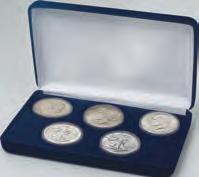

Ultimate U.S. Silver Dollars Set — Regular Price $249 - $199
Save $50.00 (over 20%) + FREE SHIPPING For fastest service call
